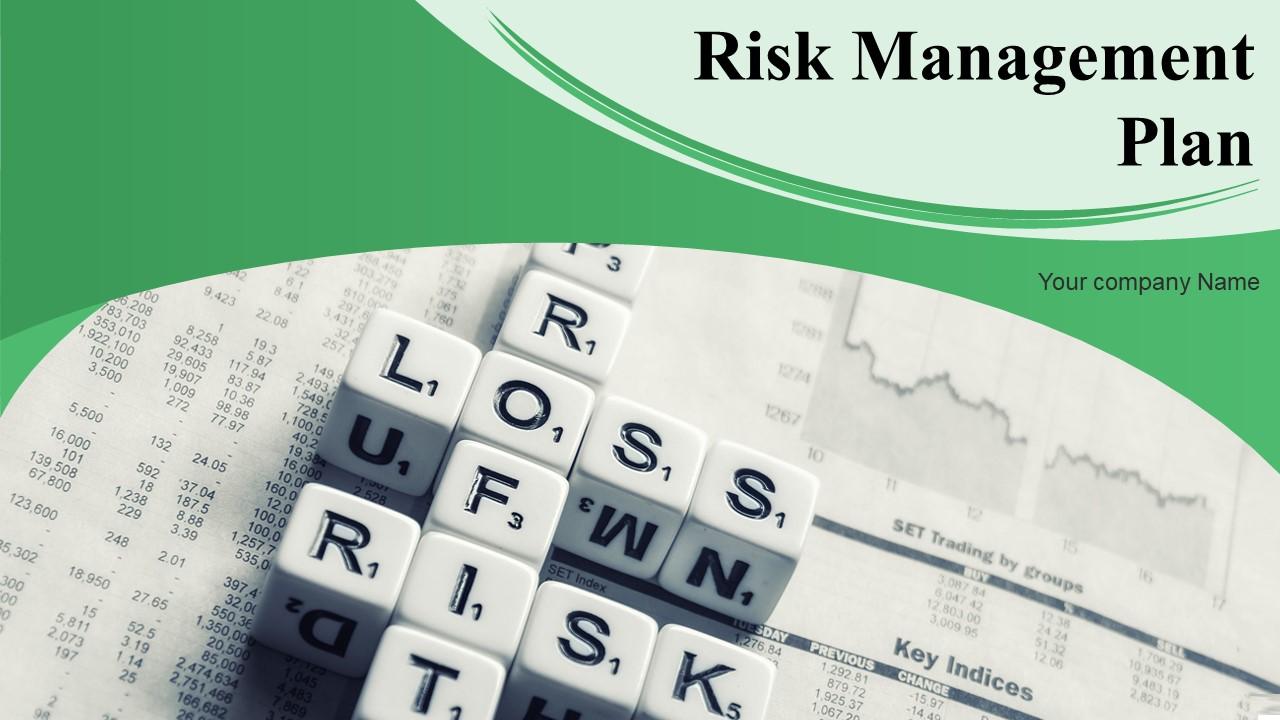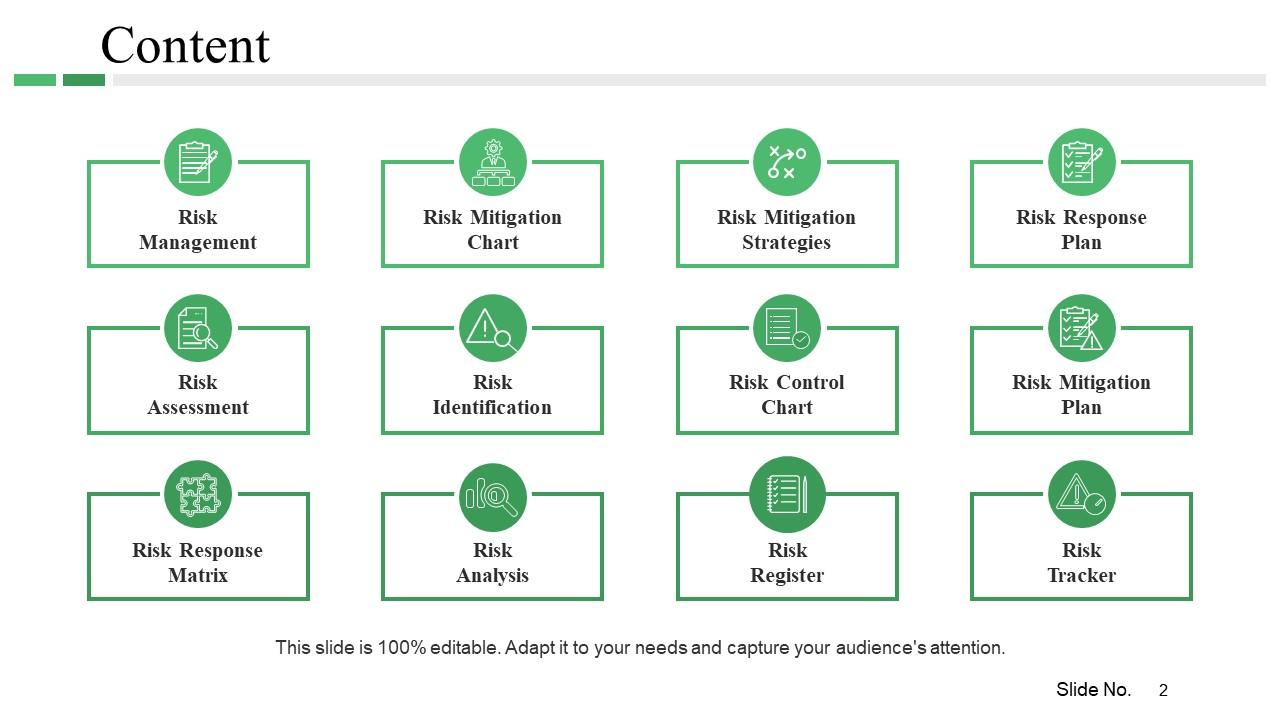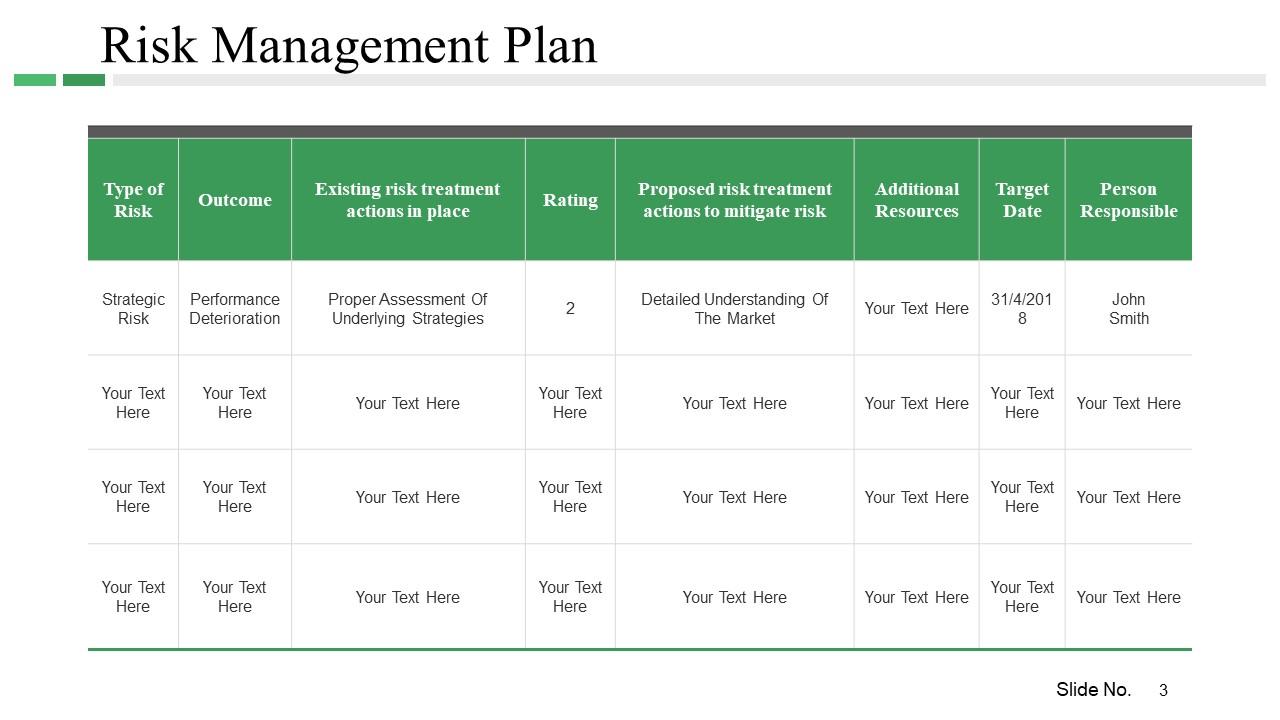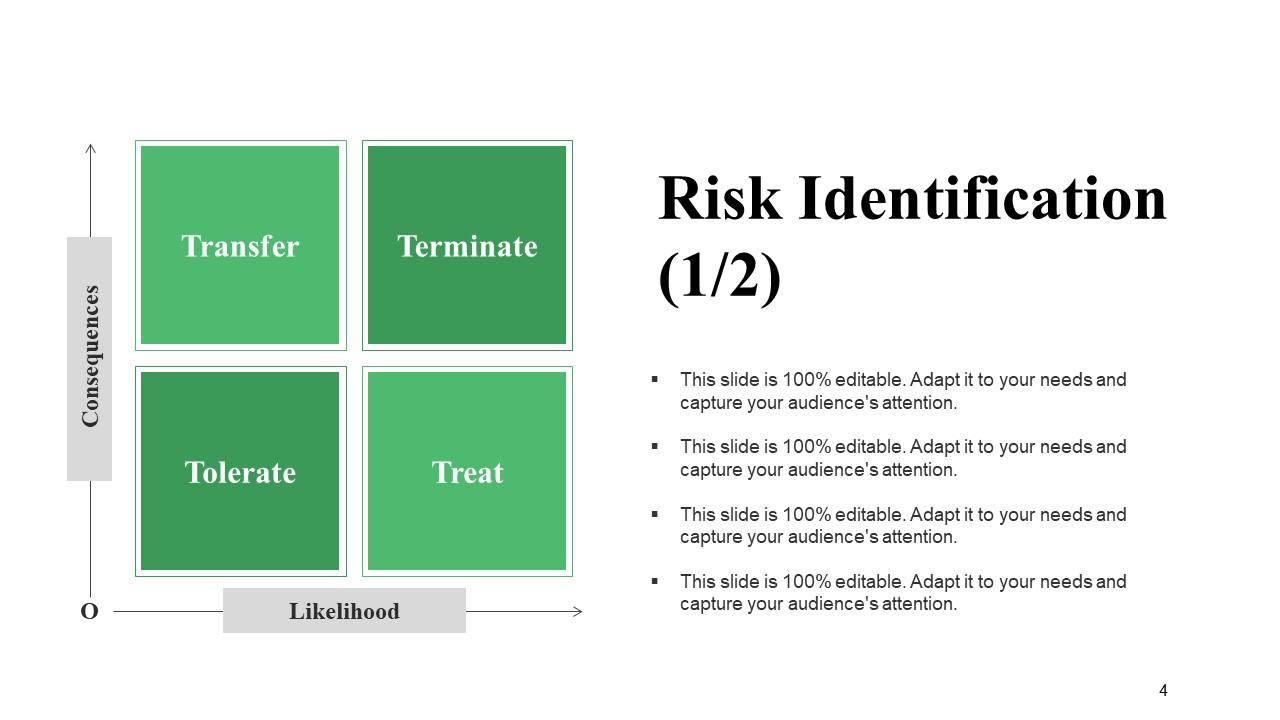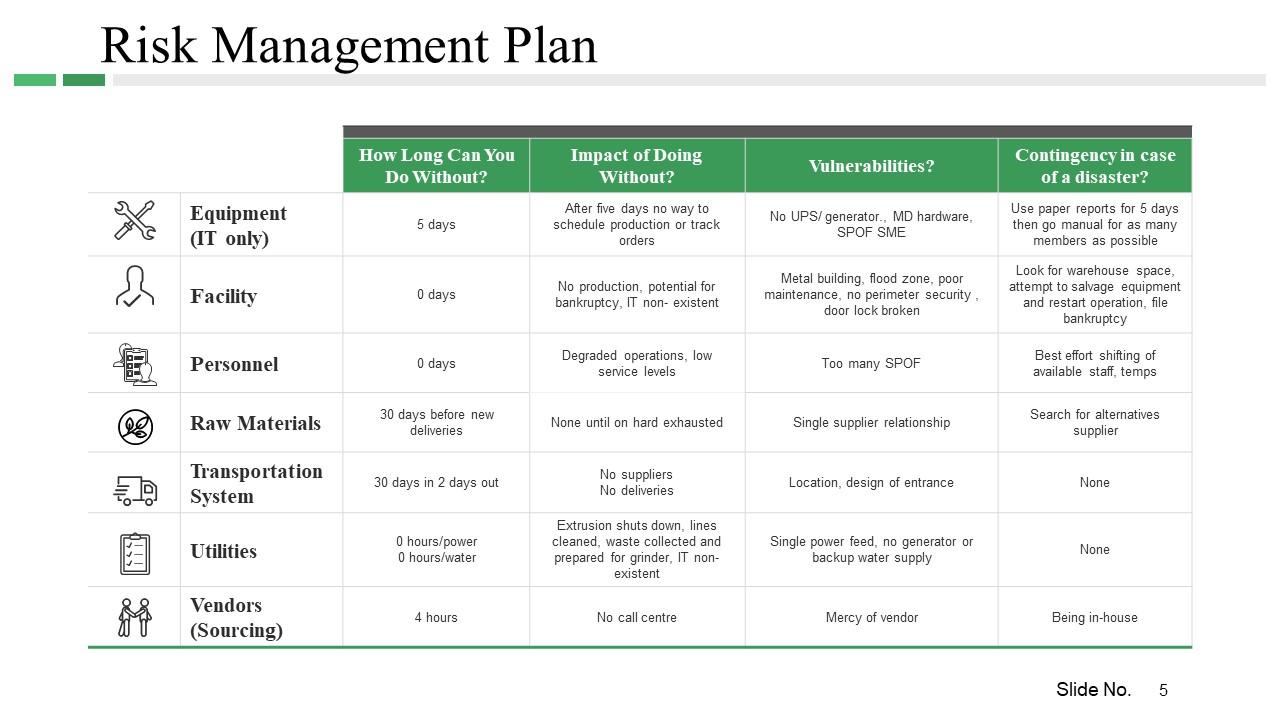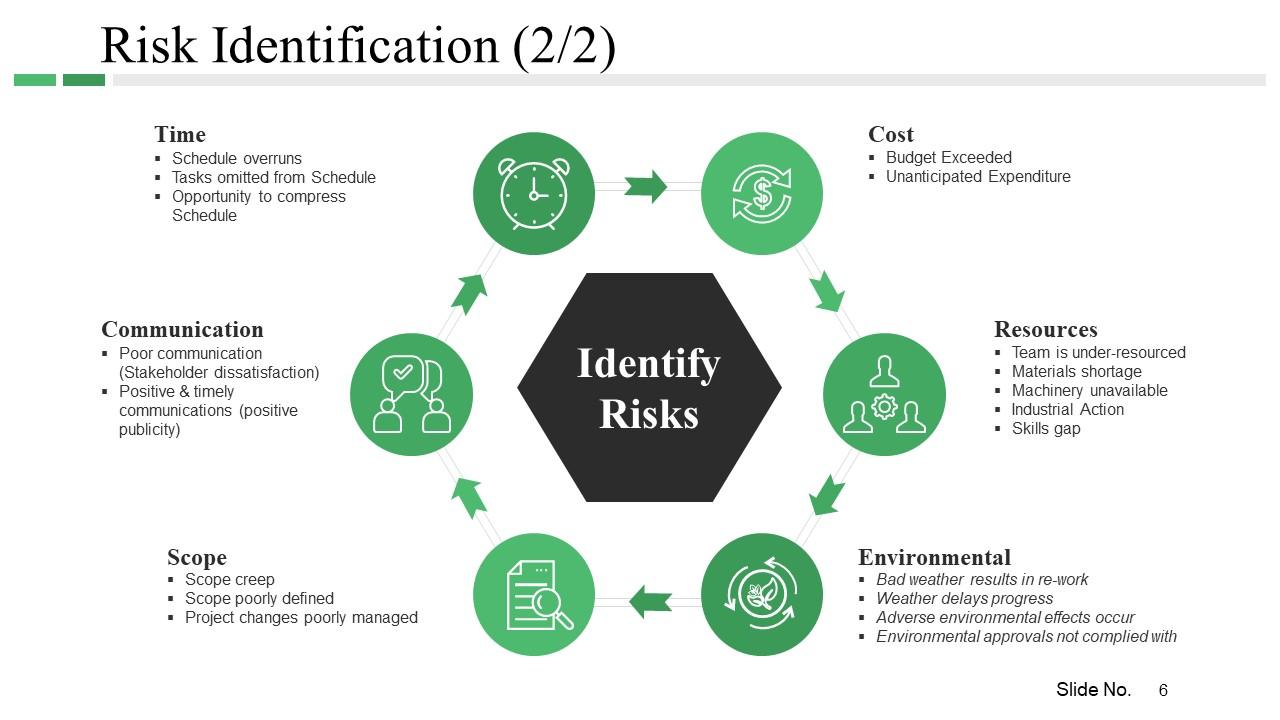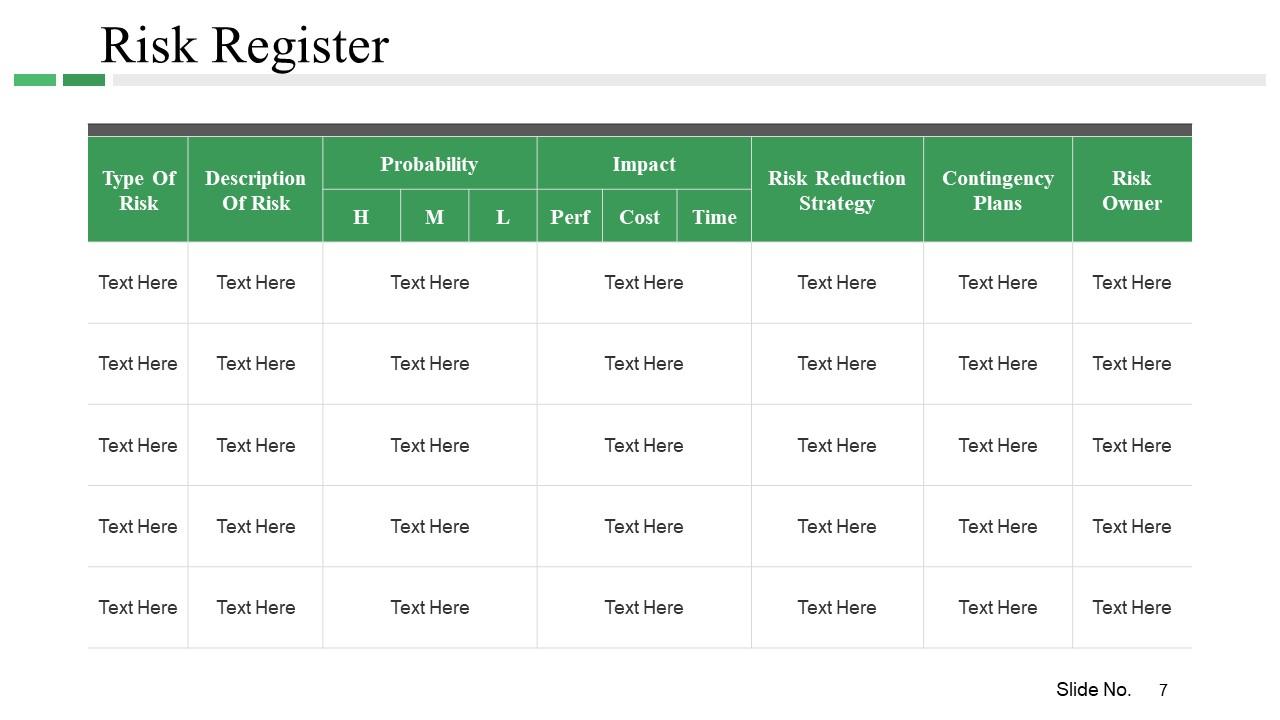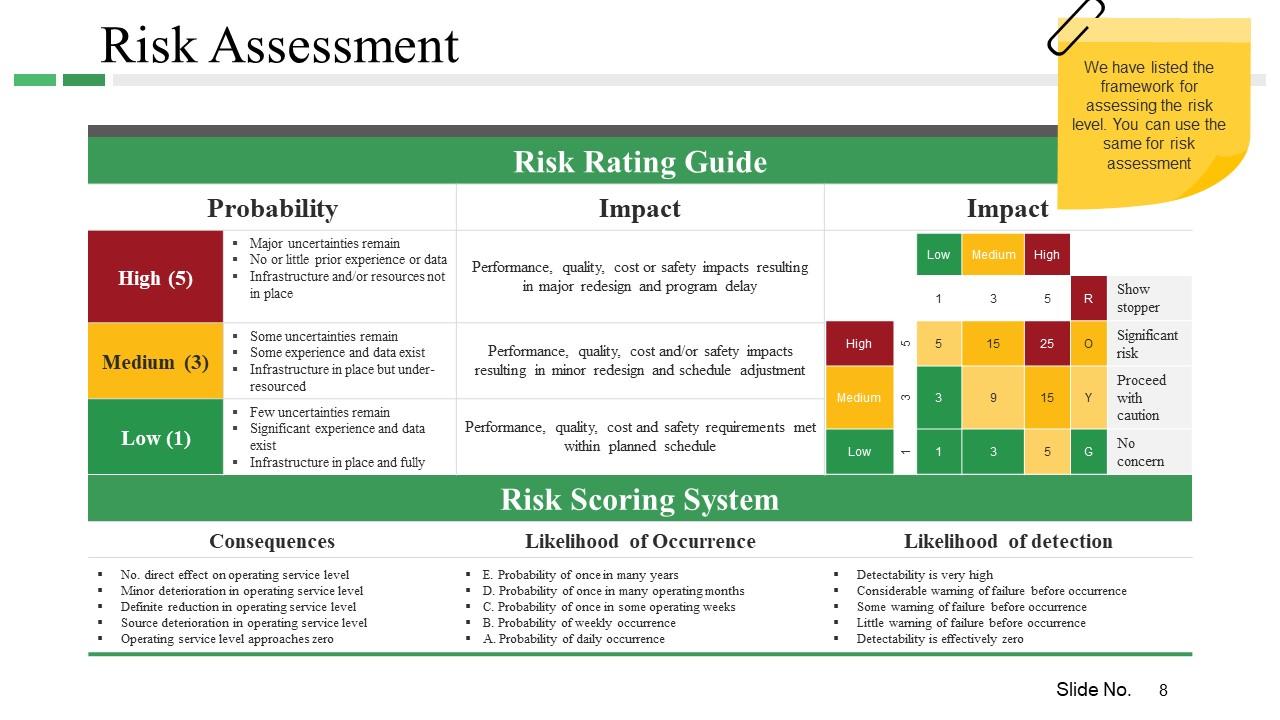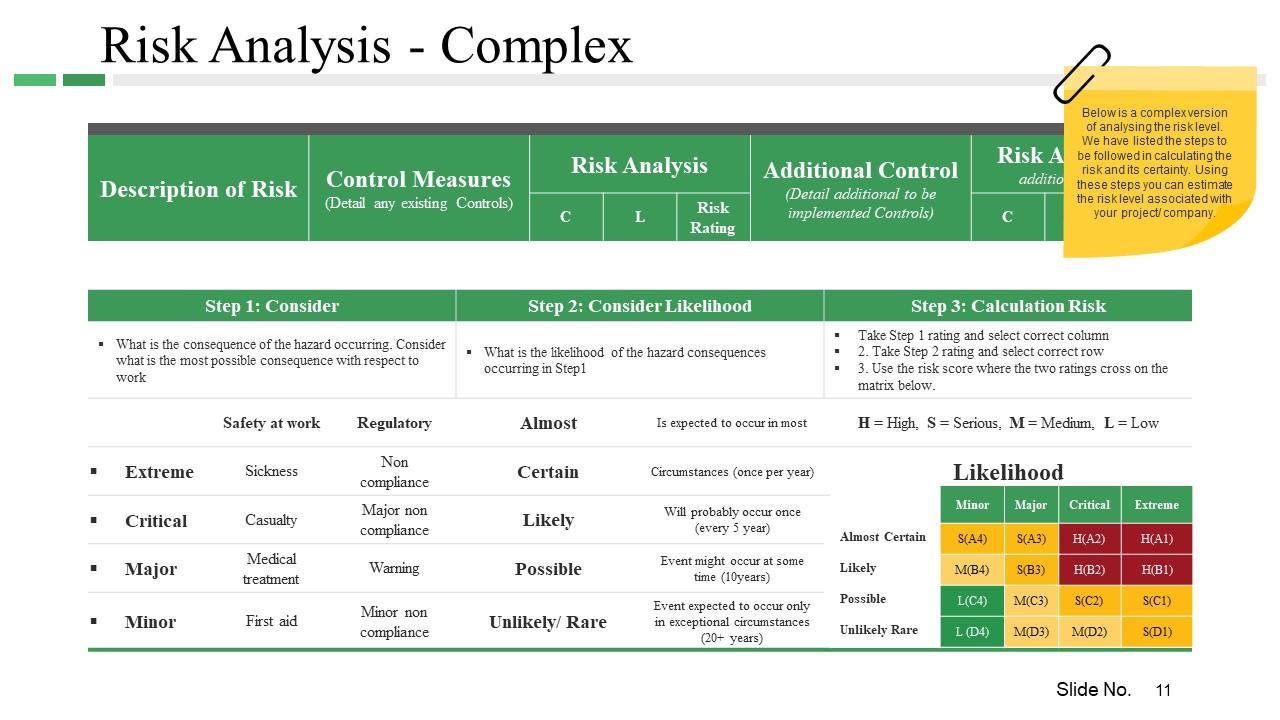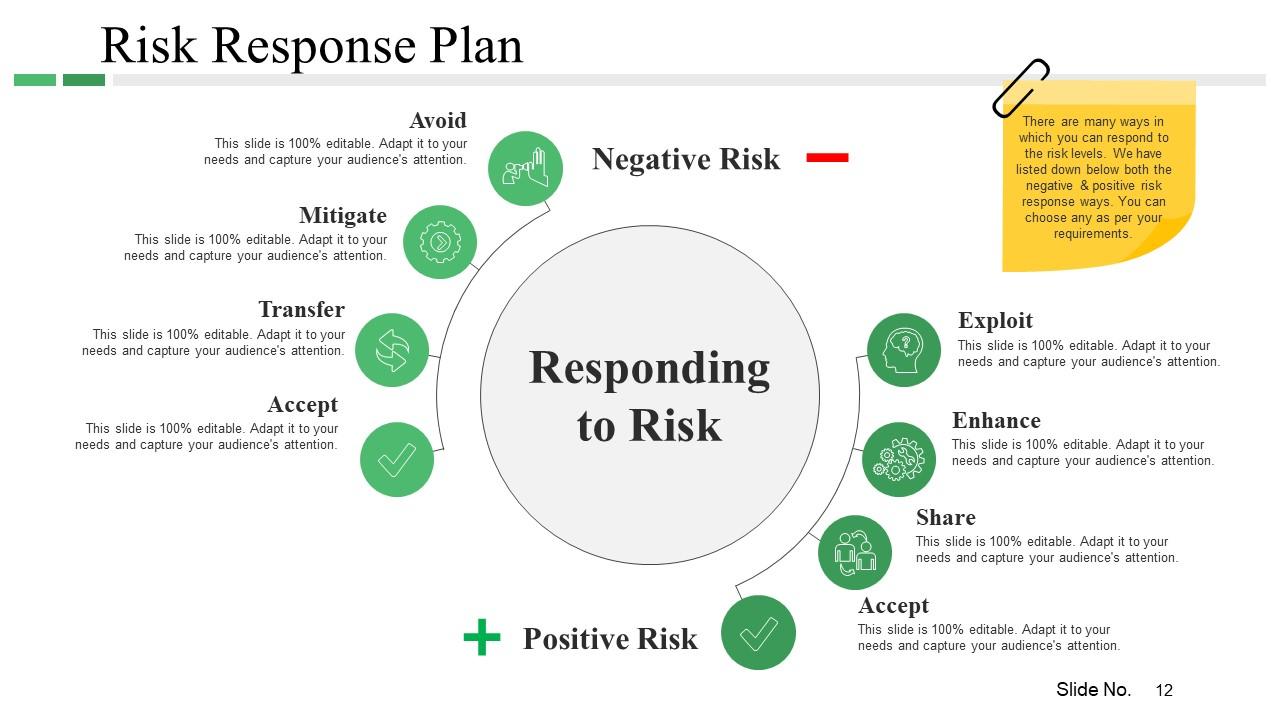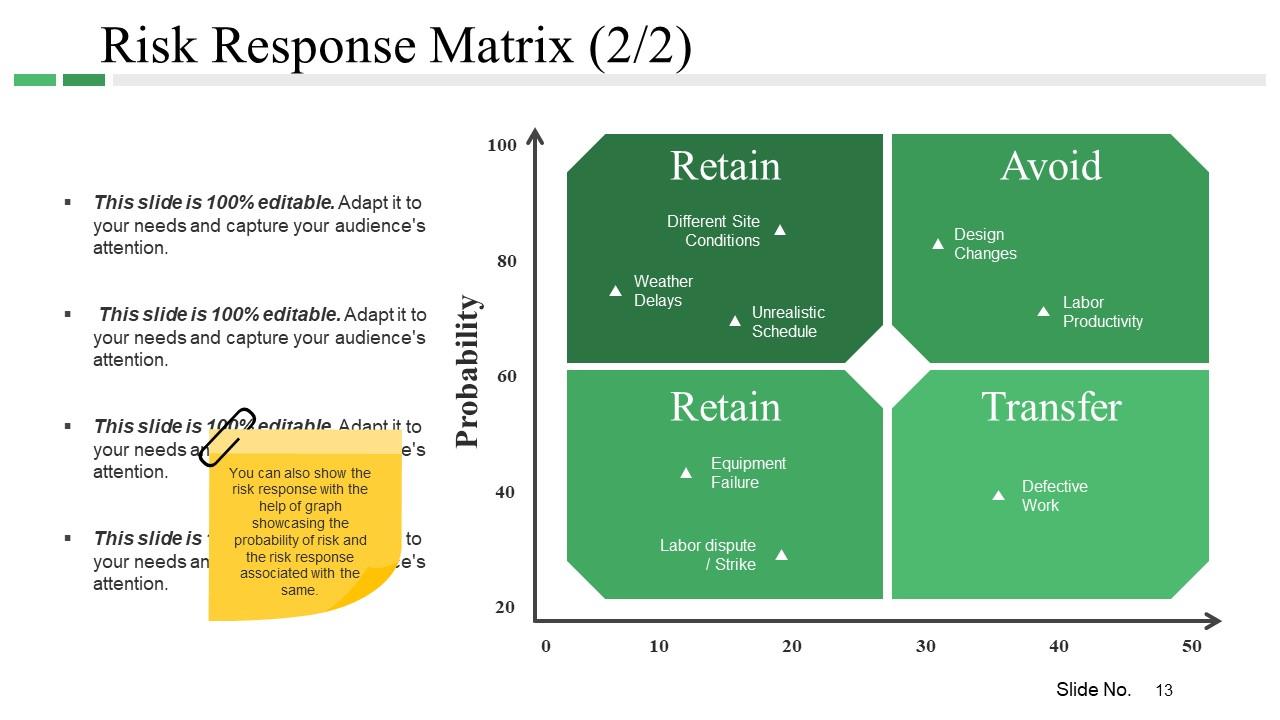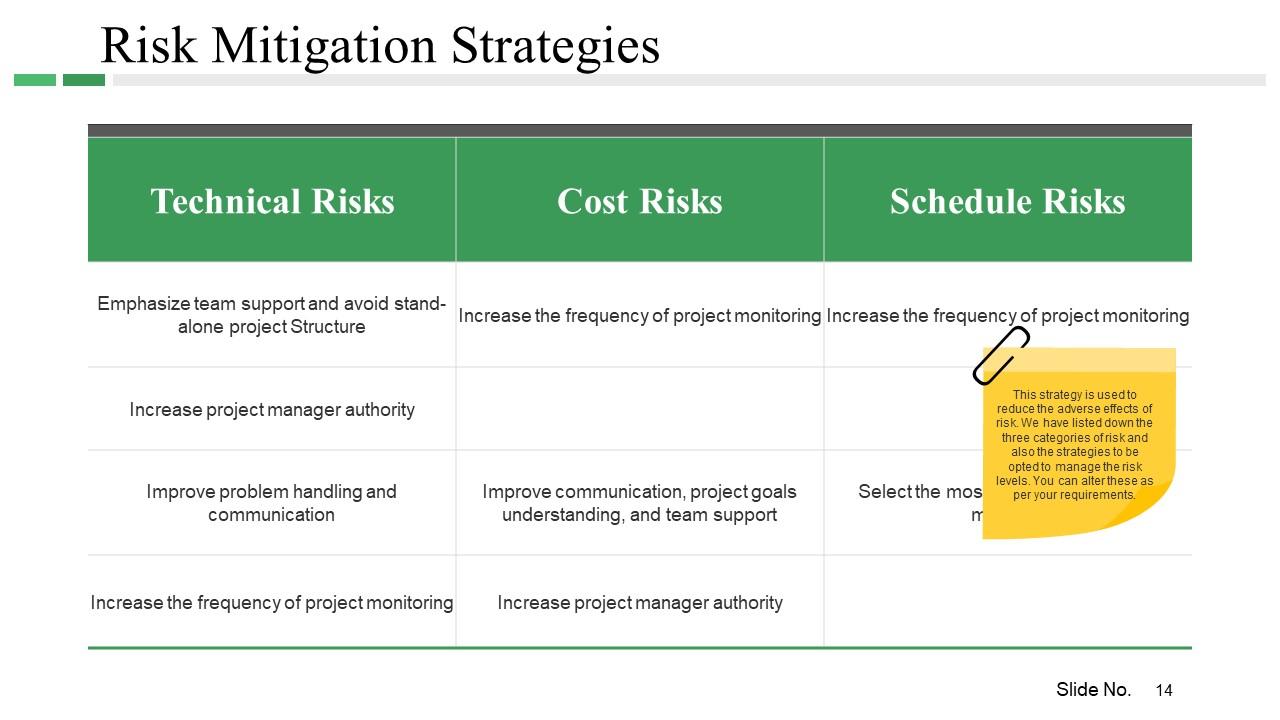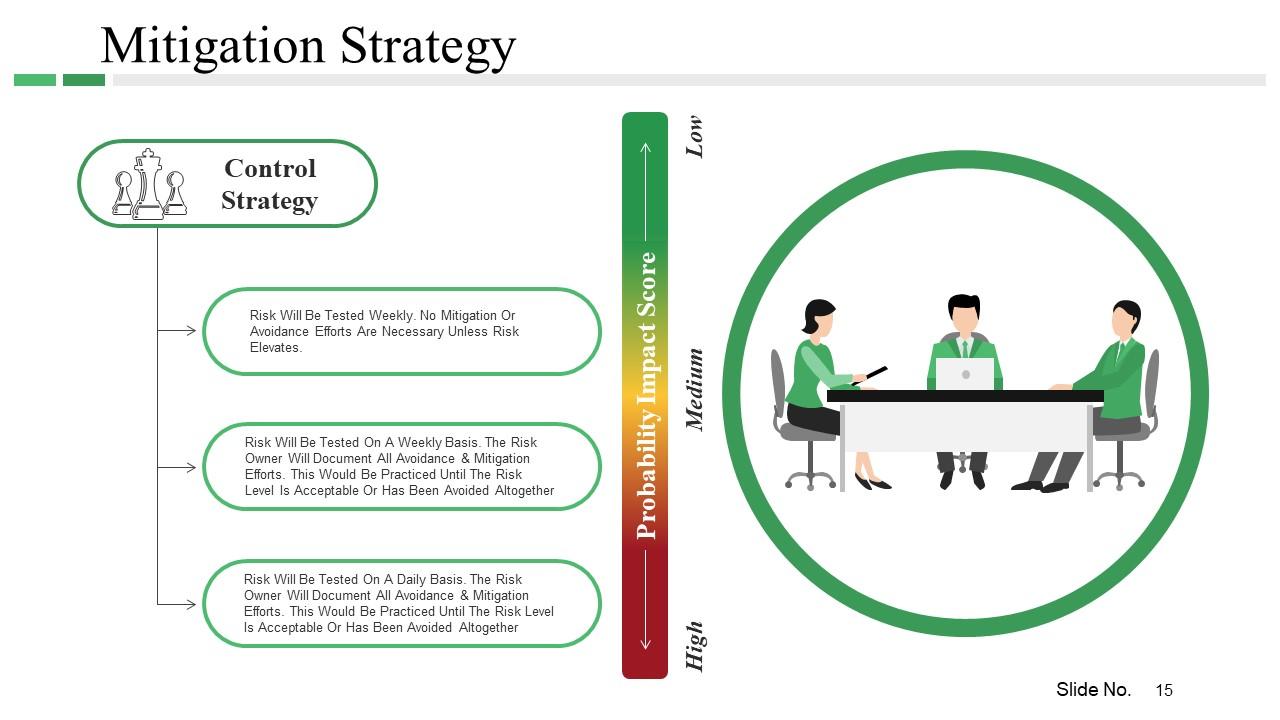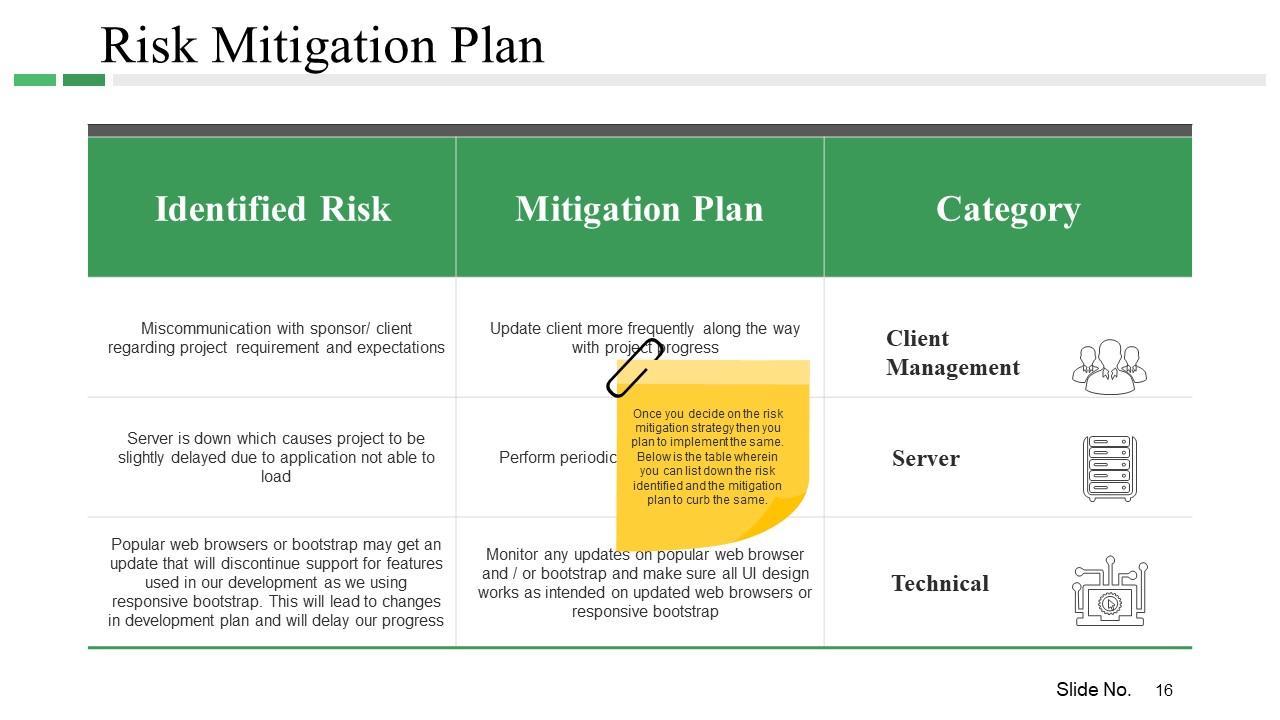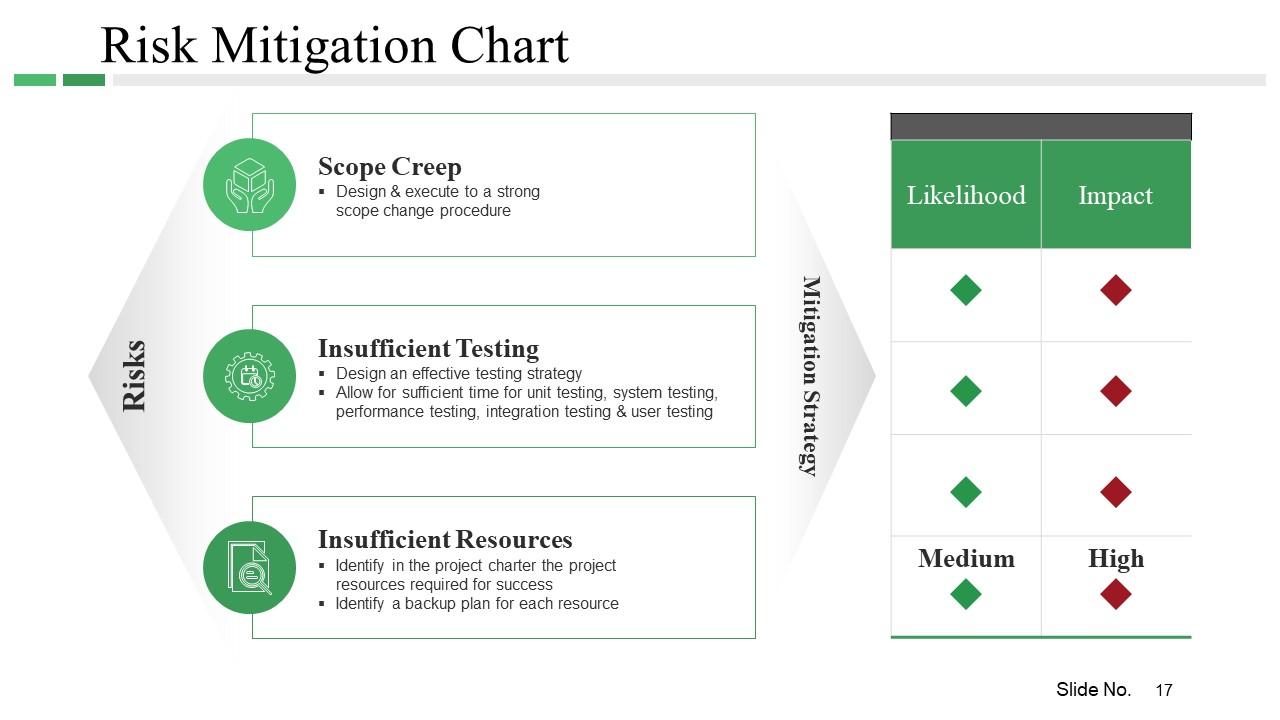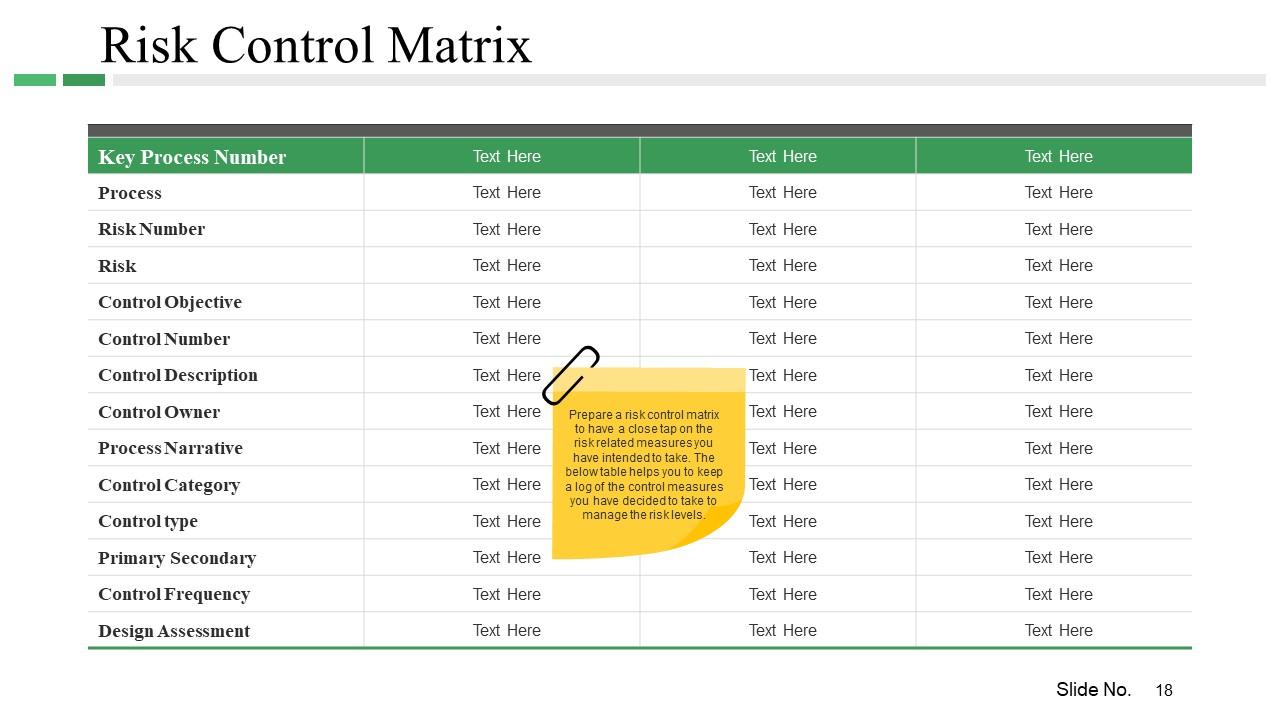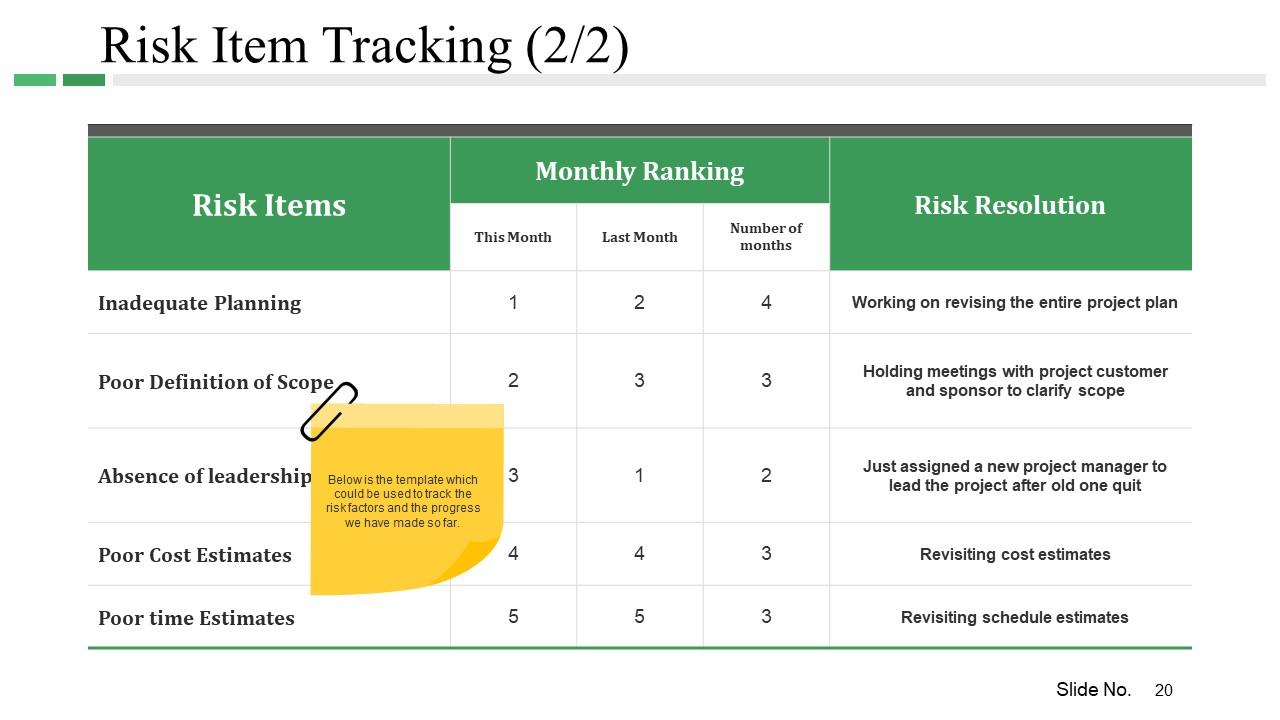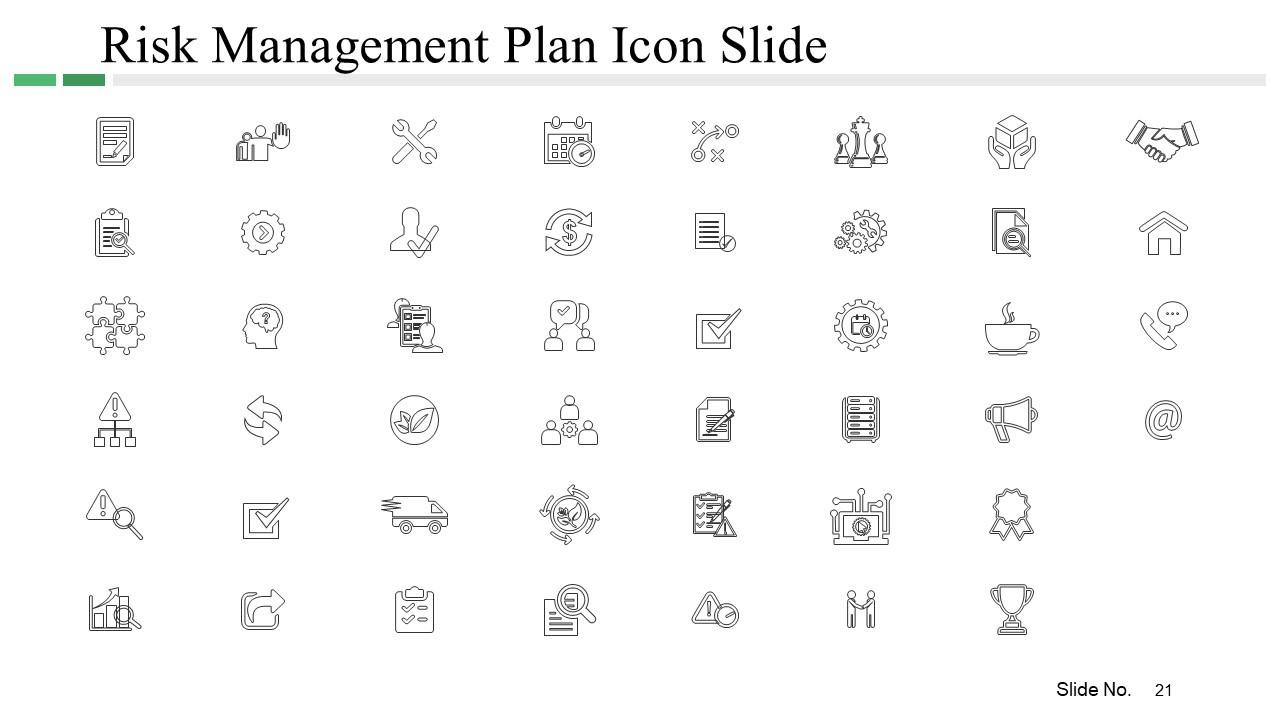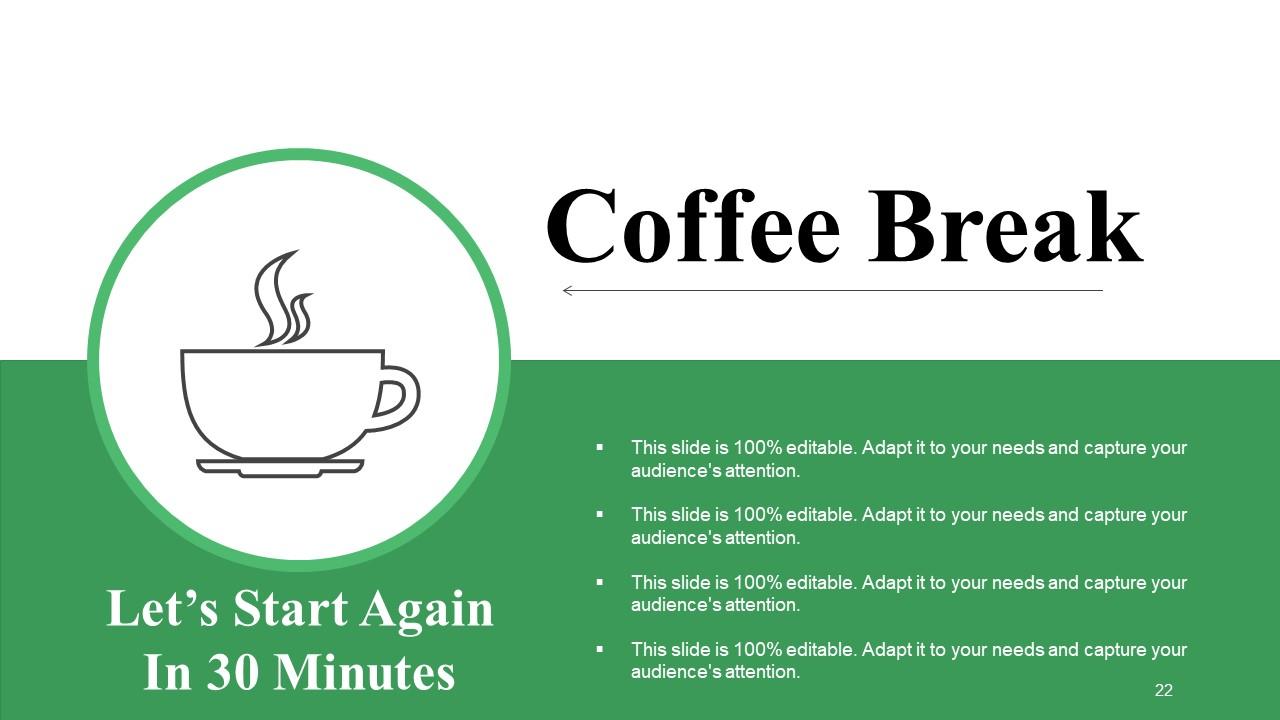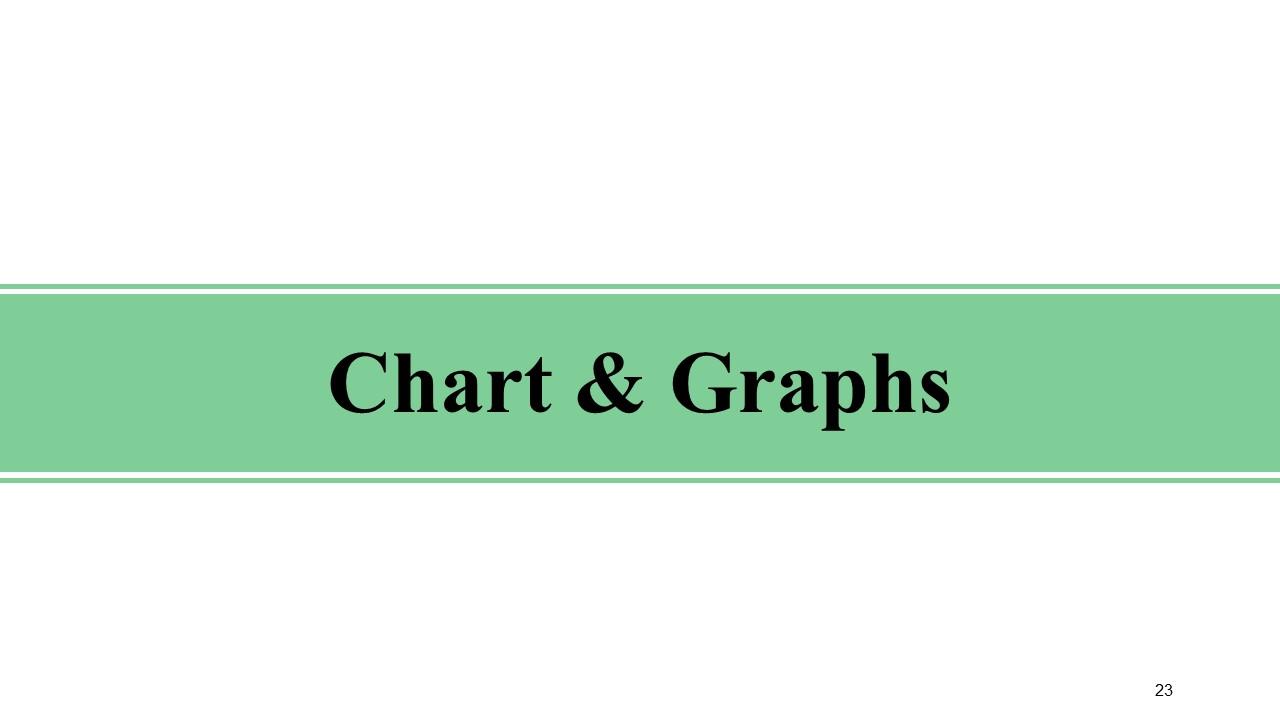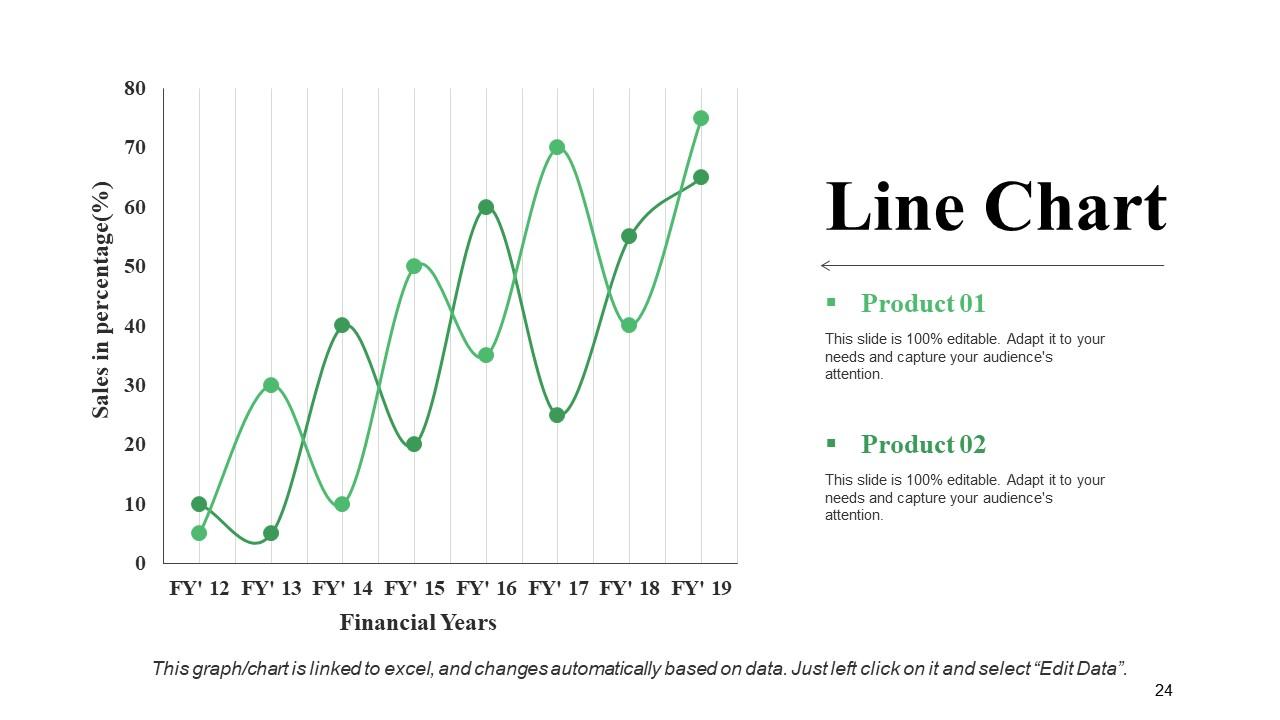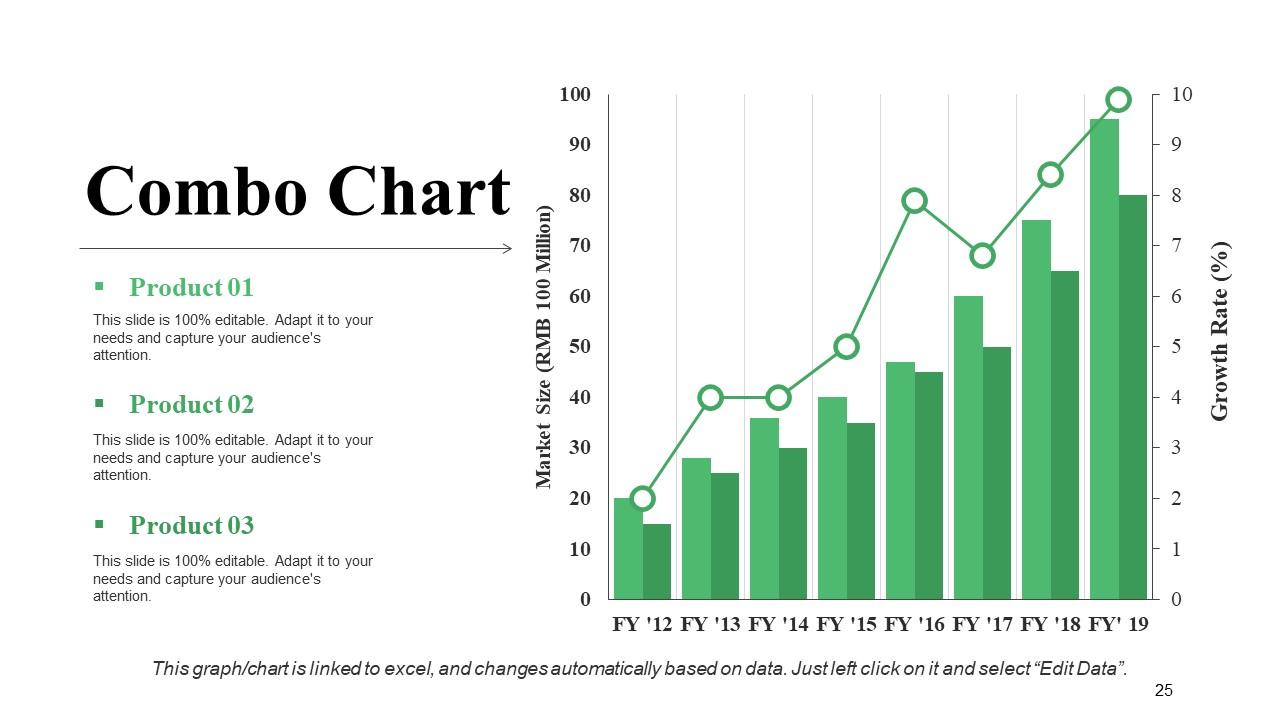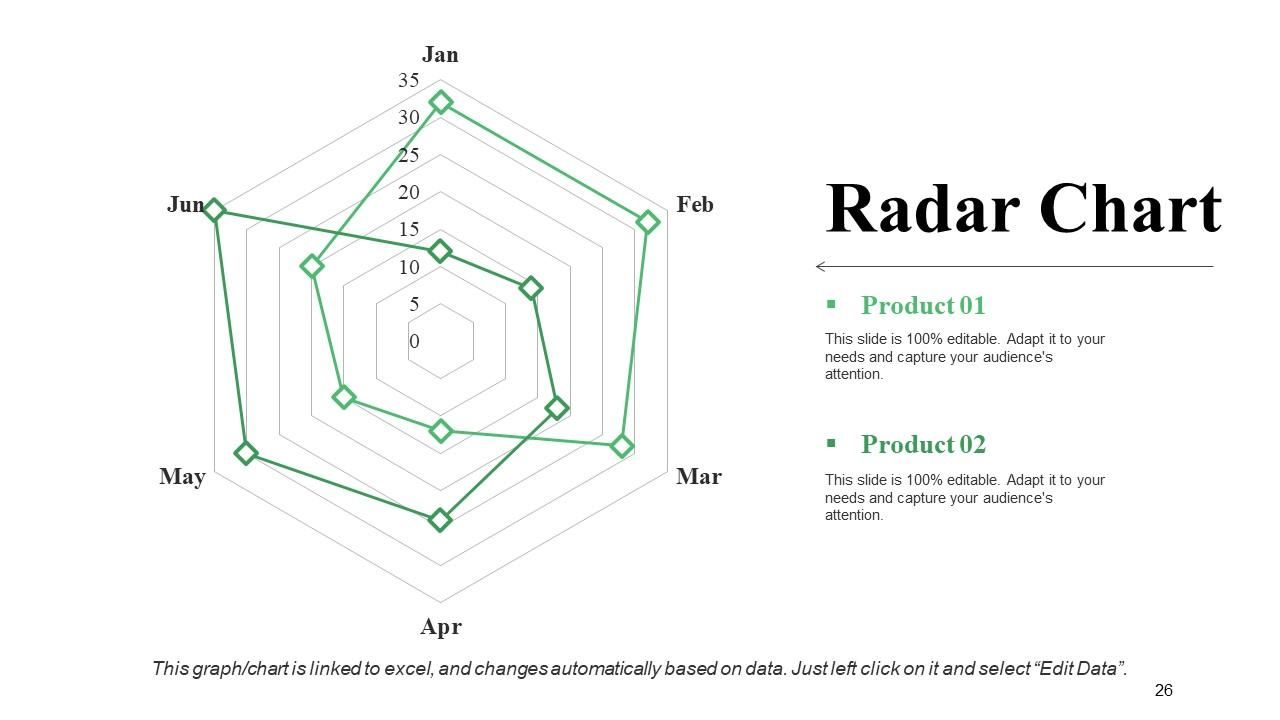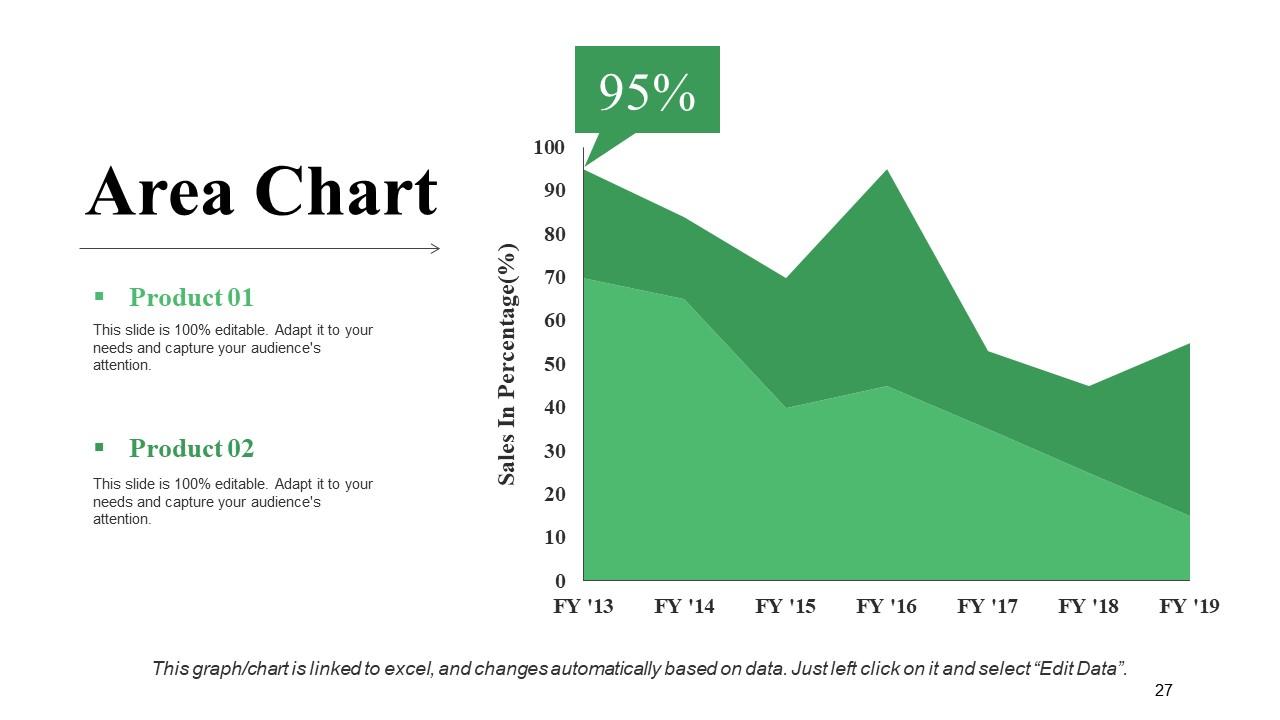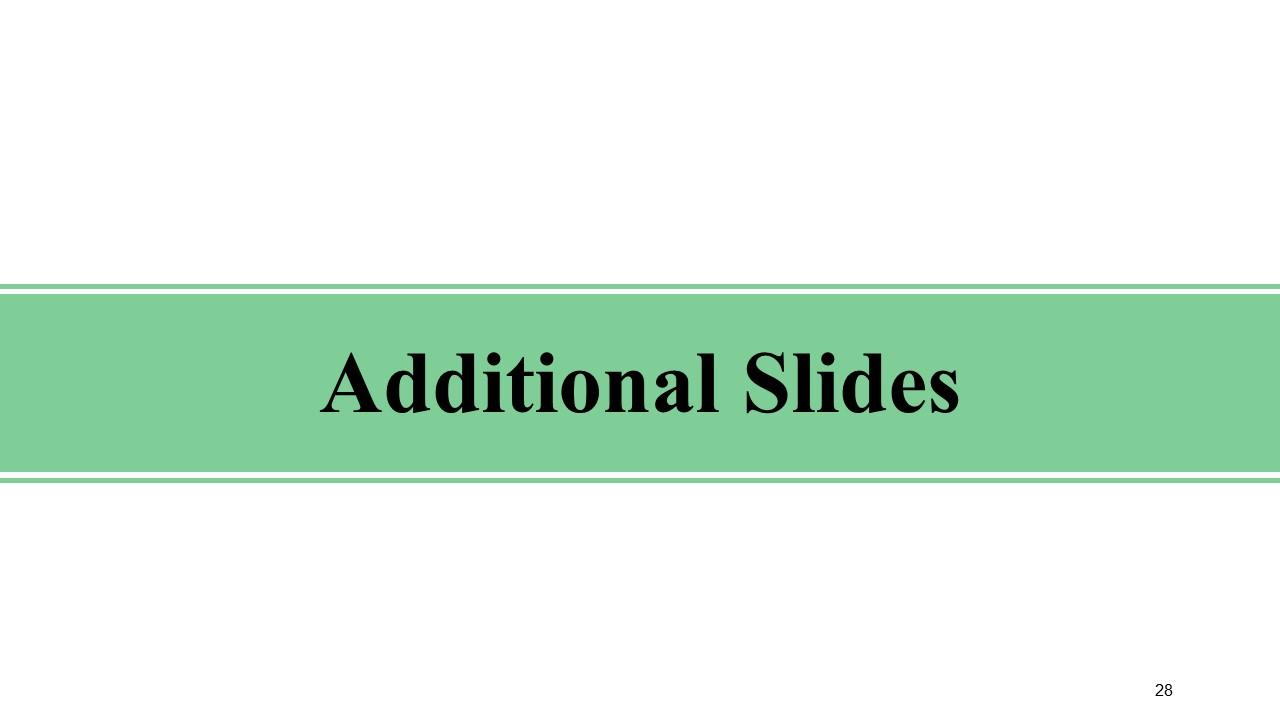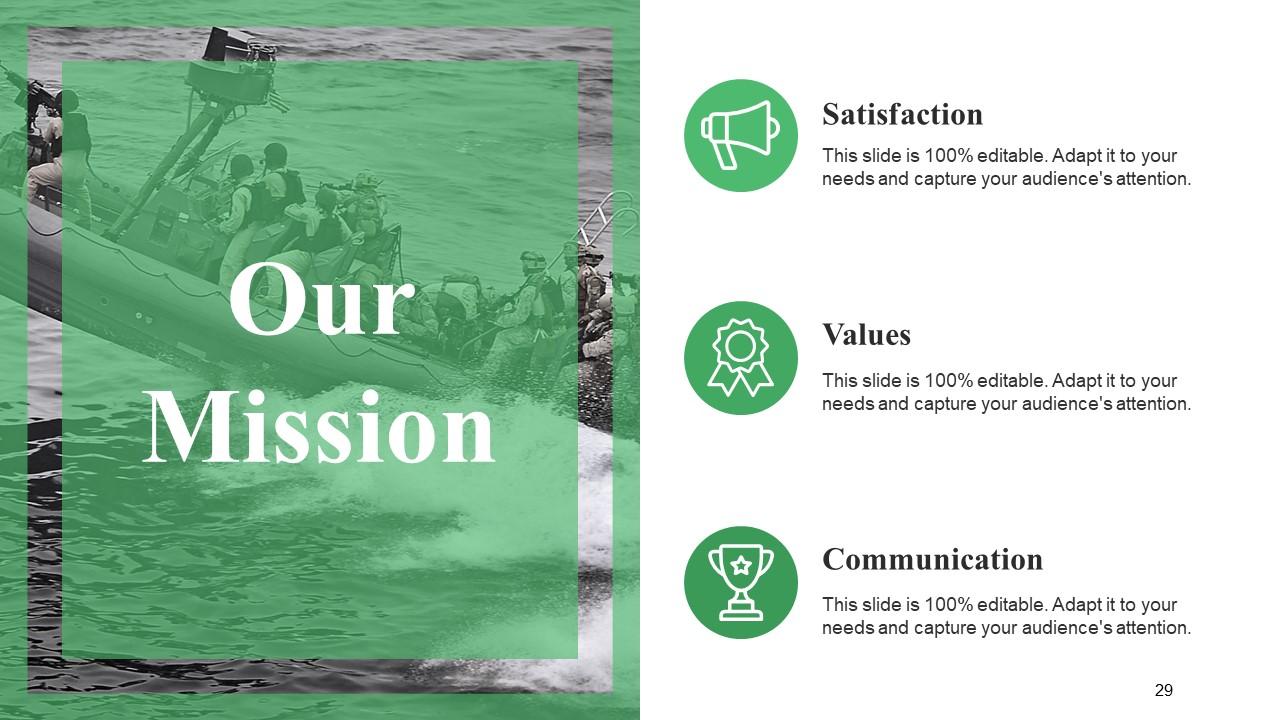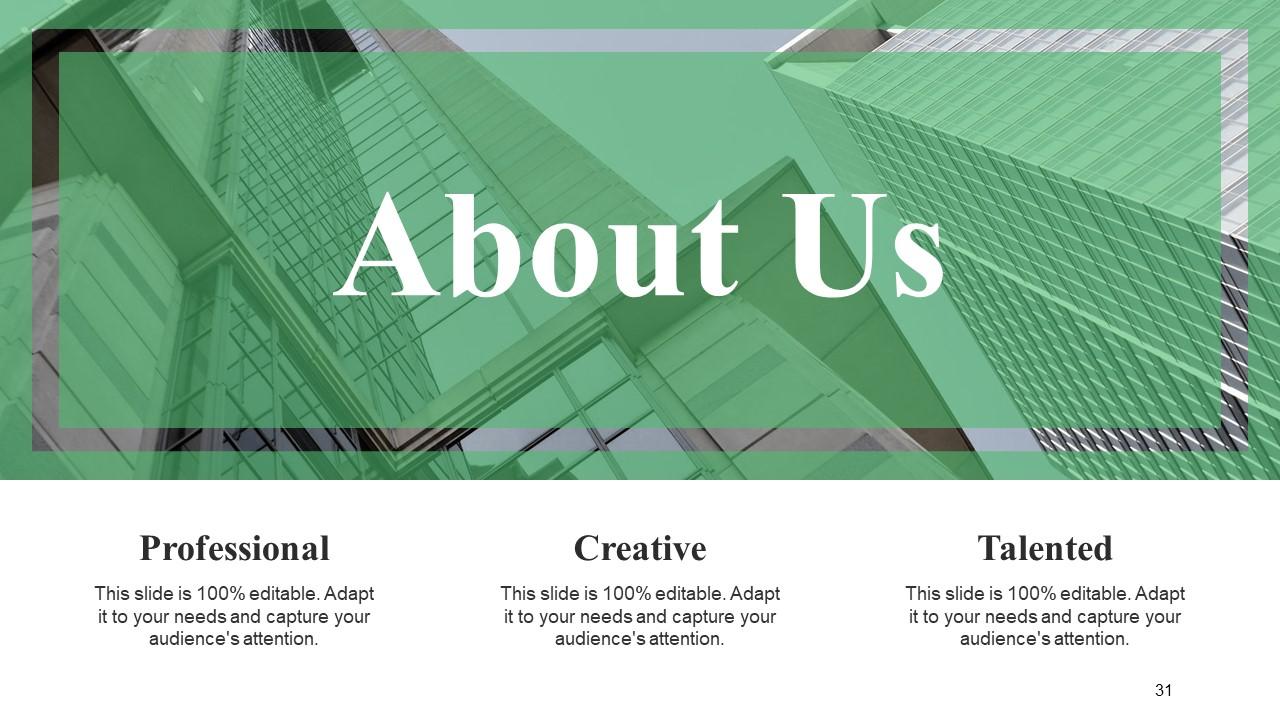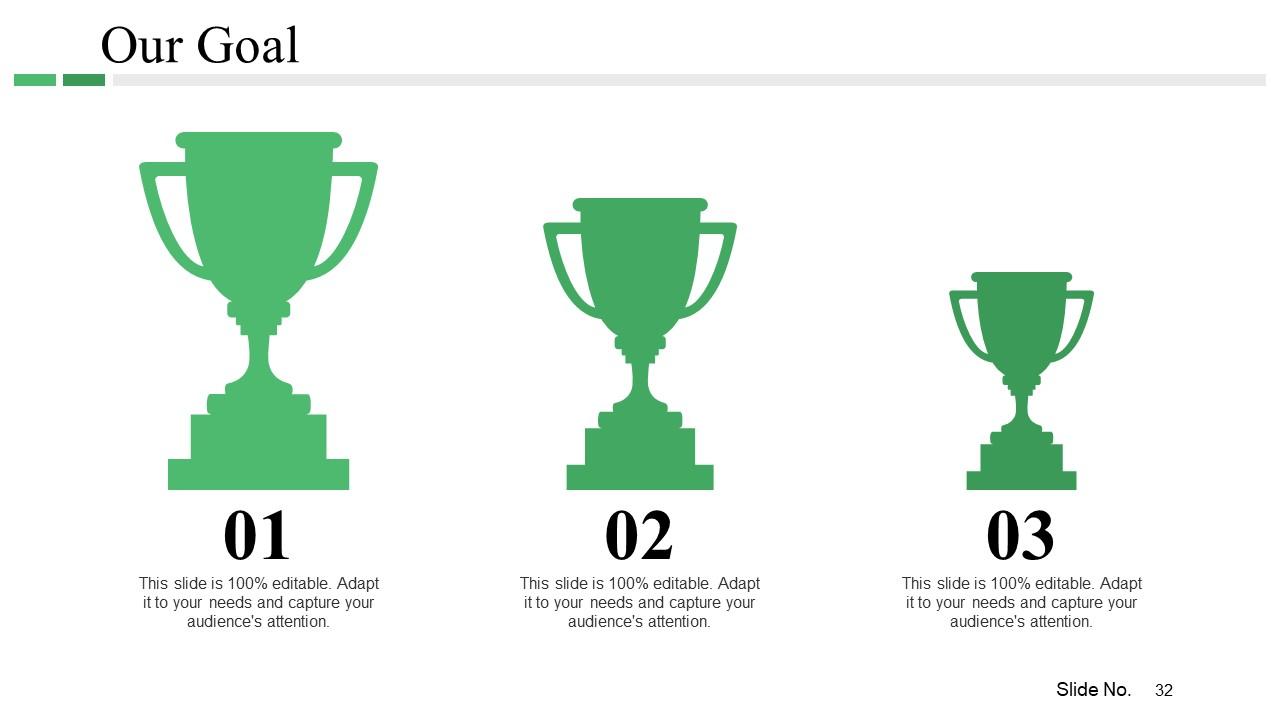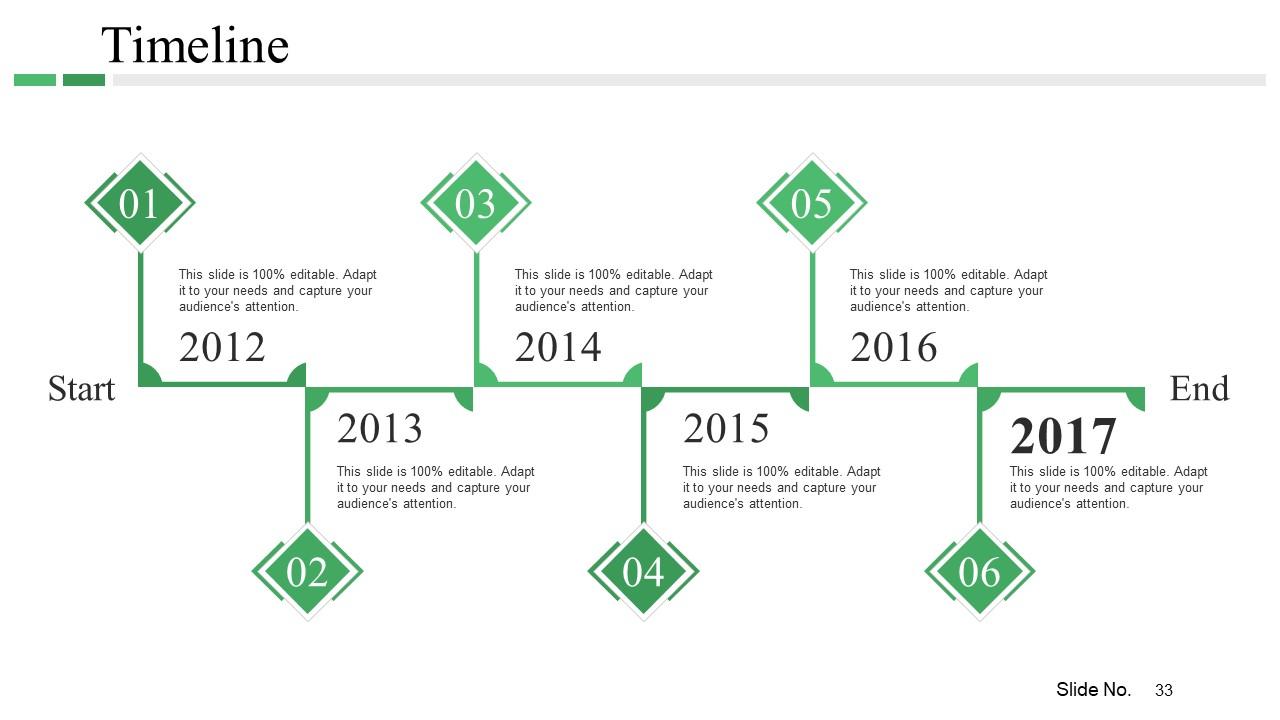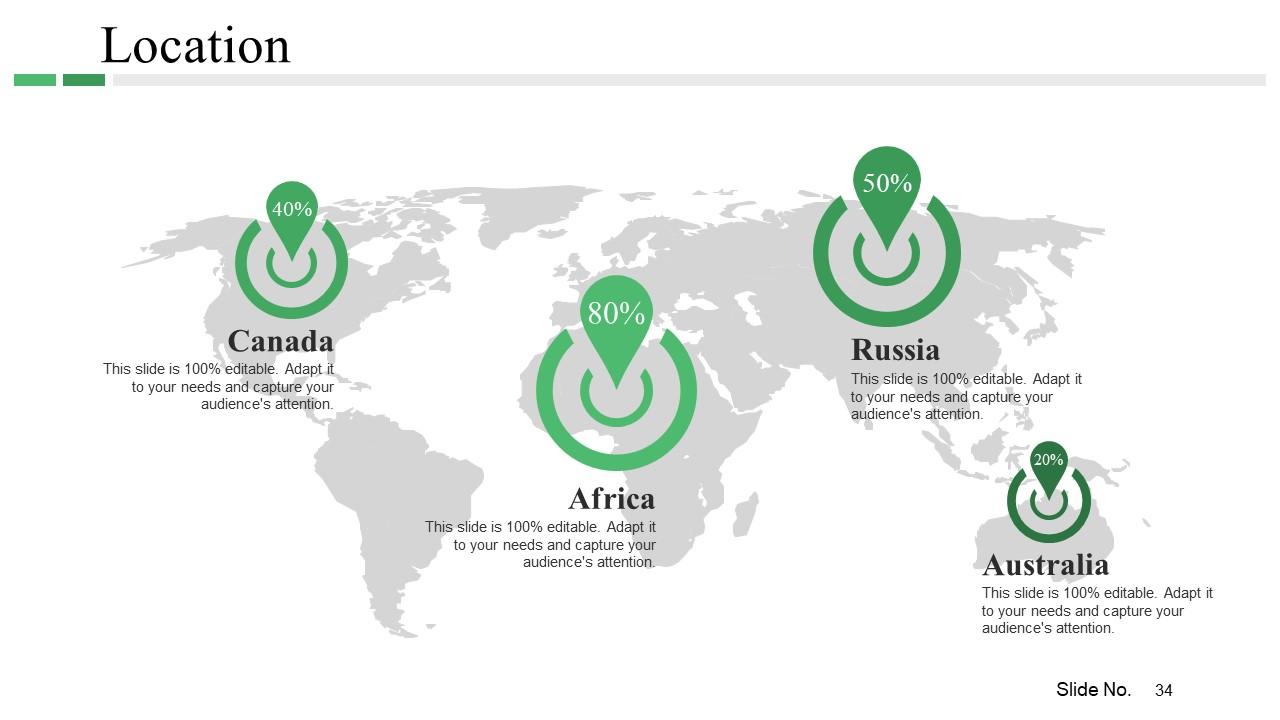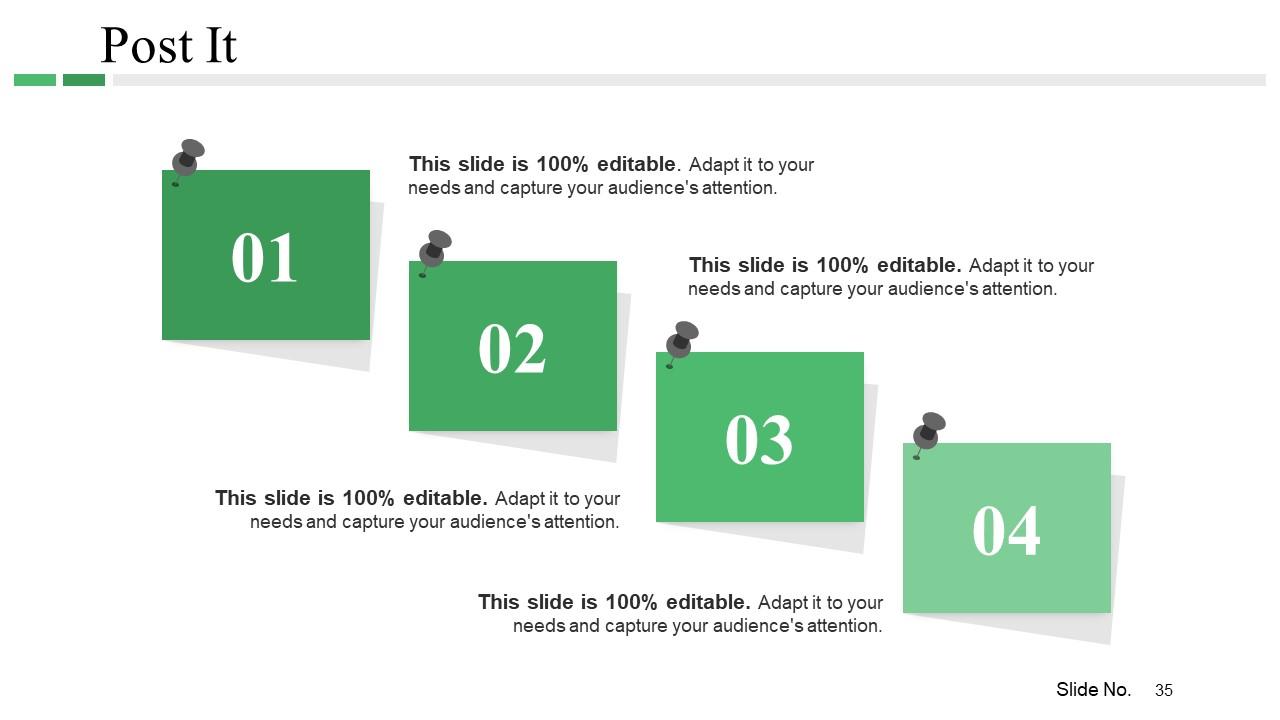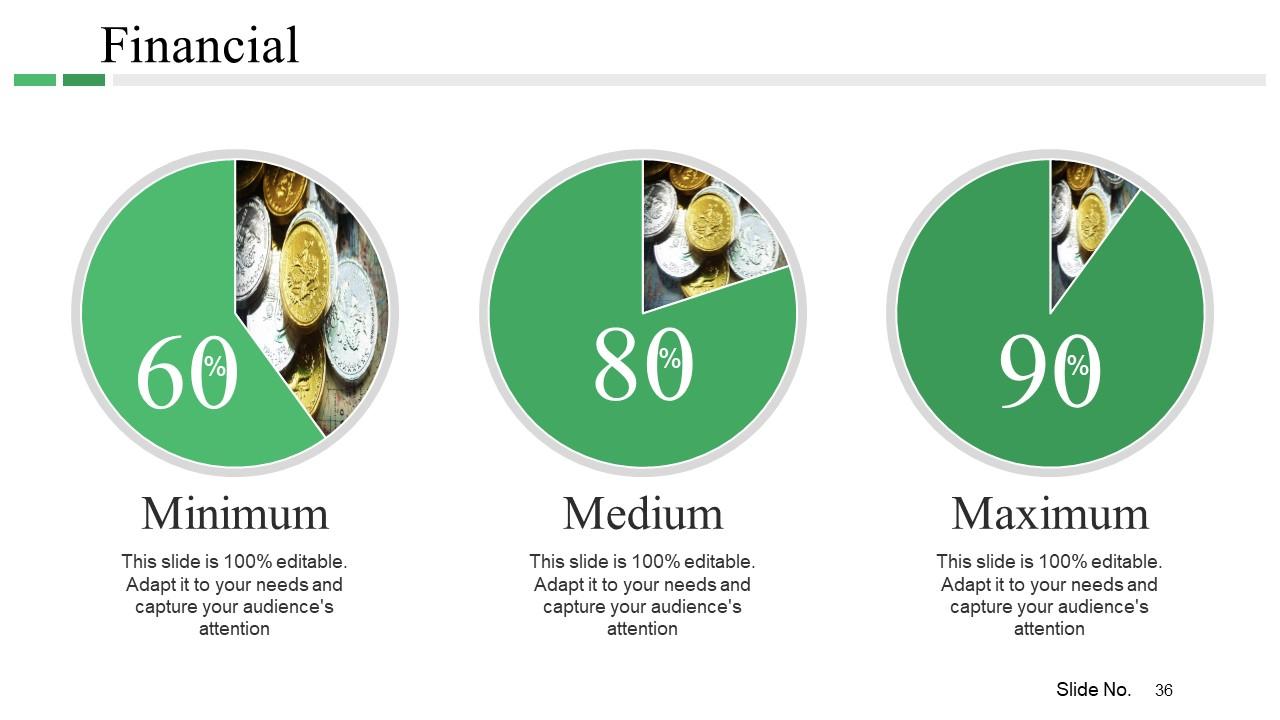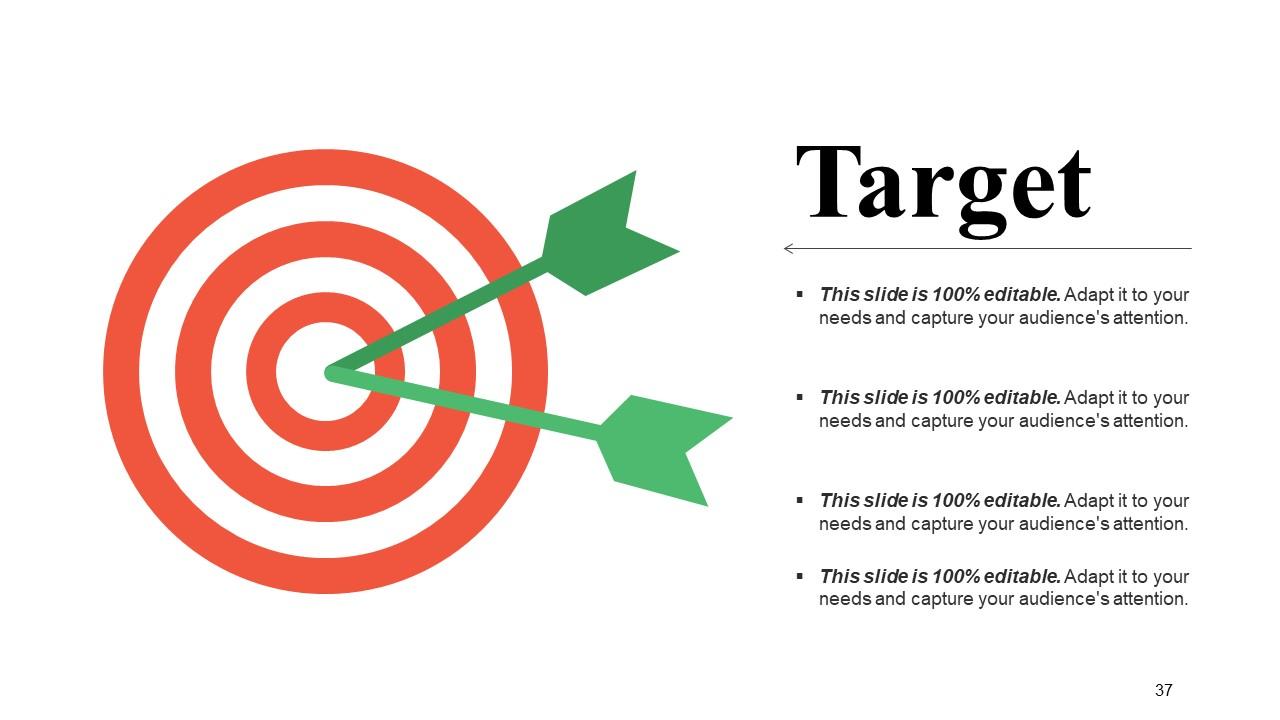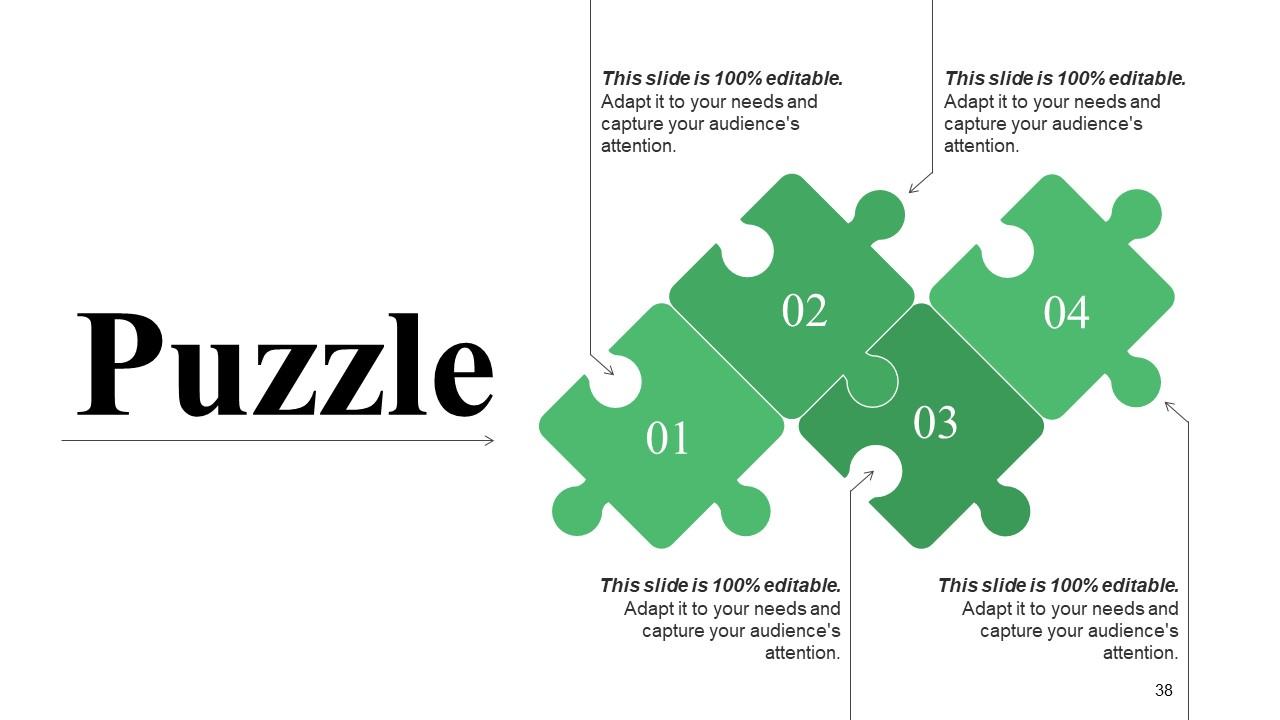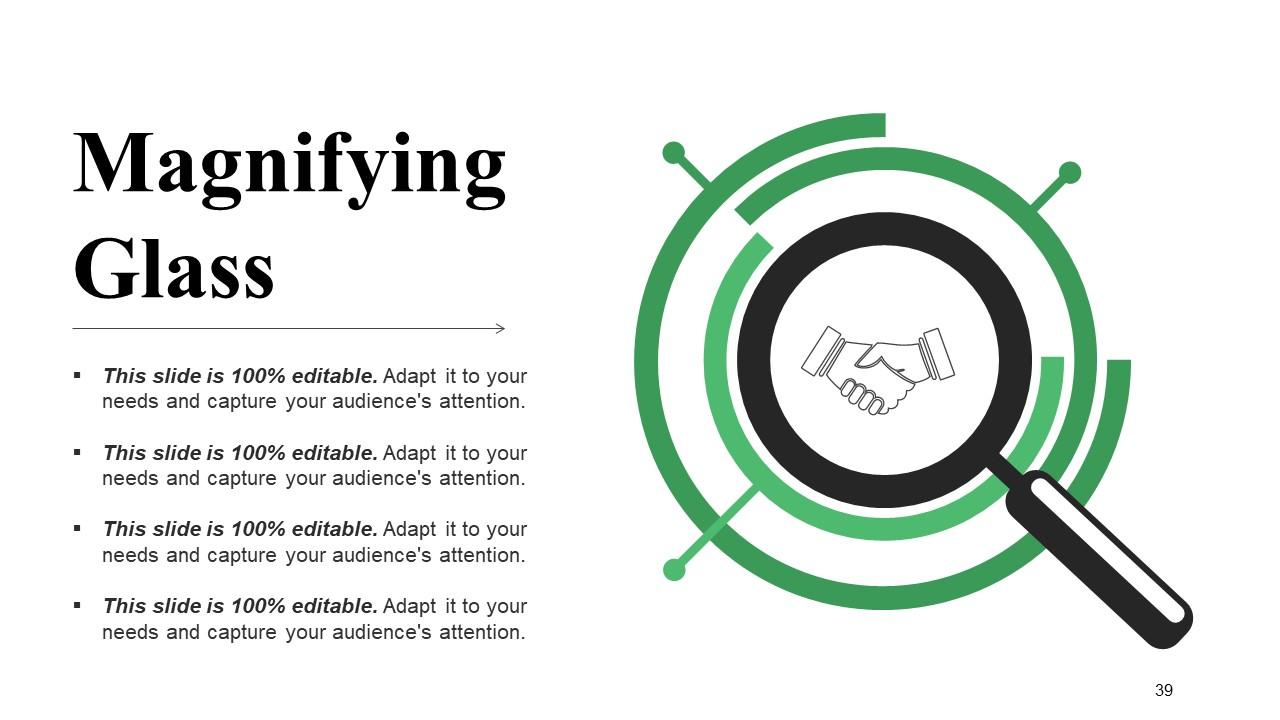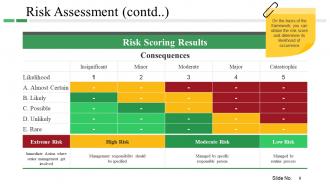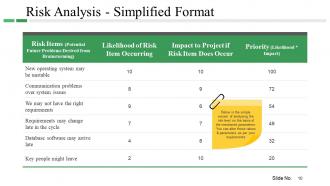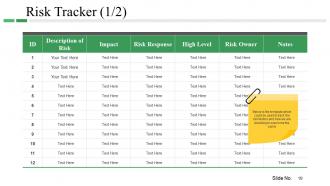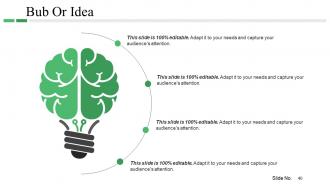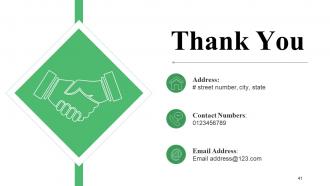Risk management plan powerpoint presentation slides
Project managers often need to present PPT slides projecting certain areas of business concern. At times, it turns out to be a difficult task as forecasting of risks or estimating impact of the same needs a record of data. A Risk Management Plan PowerPoint Presentation Slides, therefore, is a must for all business operations. PowerPoint layout with information in every possible graphical format helps to track the positive and negative aspects of an uncertain event at its occurrence. Thus, presentation template for risk management acts as a buffer guide. Five core areas which include identification of risk, analysis, evaluation or ranking of risks, threat posed by the same and monitoring and review have been sectioned out well in PPT graphics making the task easier for you. The data compiled in PowerPoint slides helps to identify the potential threats and manage risk handling activities. Predefined guidelines and setting of controls in risk management slideshow presentation are also covered Focus on avoiding injury with our Risk Management Plan Powerpoint Presentation Slides. Always advocate careful handling.
Project managers often need to present PPT slides projecting certain areas of business concern. At times, it turns out to ..
- Google Slides is a new FREE Presentation software from Google.
- All our content is 100% compatible with Google Slides.
- Just download our designs, and upload them to Google Slides and they will work automatically.
- Amaze your audience with SlideTeam and Google Slides.
-
Want Changes to This PPT Slide? Check out our Presentation Design Services
- WideScreen Aspect ratio is becoming a very popular format. When you download this product, the downloaded ZIP will contain this product in both standard and widescreen format.
-

- Some older products that we have may only be in standard format, but they can easily be converted to widescreen.
- To do this, please open the SlideTeam product in Powerpoint, and go to
- Design ( On the top bar) -> Page Setup -> and select "On-screen Show (16:9)” in the drop down for "Slides Sized for".
- The slide or theme will change to widescreen, and all graphics will adjust automatically. You can similarly convert our content to any other desired screen aspect ratio.
Compatible With Google Slides

Get This In WideScreen
You must be logged in to download this presentation.
PowerPoint presentation slides
Businessmen, sales and marketing professionals and brand managers can use the presentation effectively. Graphics, text placeholders and related pictures are additional helpful feature of PPT layout. All diagrams are 100% editable in the presentation slide Presentation allows changes in color, size and orientation of any slide to your liking without affecting the resolution. Presentation slide show supports quality functioning on all software.
Content of this Powerpoint Presentation
Slide 1: This slide shows Risk Management Plan Analysis. State the Company Name and begin.
Slide 2: This slide presents Content with these of the different and these are the points- Stakeholders Engagement, Risk Appetite, Risk Tolerance, Tools & Practices, Risk Impact Analysis, Impact &Probability Analysis, Risk Mitigation Strategies, Qualitative Analysis, Quantitative Analysis, Risk Management Lifecycle, Procedure for managing the Risk, Risk Planning, Risk Identification, Risk Assessment, Risk Monitoring, Risk Tracking, Introduction, Risk Management- Introduced, Types of Risk, Risk Categories, Identify Risk Categories.
Slide 3: This slide showcases Risk Management Lifecycle which further present circular lifecycle with these of the following factors- Plan Risk Response, Identify Risks, Analyze Risks, Monitor & Control, Risks Management Close-out, Development Risks Management Plan.
Slide 4: This slide presents Introduction with these of the following of the four considered steps- Type Of Risks, Risk Categories, Risk Management- Introduction, Identify Risk Categories.
Slide 5: This slide showcases Risk Management- Introduction with these of the following factors- Minimize, Control, Maximize, Realization of Opportunities, Probability and/or Impact of Unfortunate Events, Resources, Identification of Risks, Assessment of Risks, Prioritization of Risks.
Slide 6: This slide presents Types of Risks (1/2).
Slide 7: This slide showcases Types of Risks (2 of 2) with these of the following parameters- Debt and interest rates, Poor Financial management, Asset losses, Goodwill and amortization, Accounting problems, Cost Overrun, Operational Controls, Poor Capacity management, Supply Chain Issues, Employee Issues incl.fraud, Bribery and Corruption, Regulation, Commodity prices, Demand Shortfall, Customer retention, Integration problems, Pricing pressure, Regulation, R & D, Industry or sector downturn, JV or partner losses, Macroeconomic, Political Issues, Legal Issues, Terrorism, Natural disasters, Operational, Financial, Hazard, Strategic, Below are four broad categories of risk and the various factors associated with the same. You can modify them as per your needs
Slide 8: This slide showcases Risk Categories.
Slide 9: This slide presents Identify the Risk Categories.
Slide 10: This slide shows Stakeholder Engagement which further showcases Stakeholders Risk Appetite with these of the two factors- Risk, Tolerance.
Slide 11: This slide presents Stakeholders Risk Appetite with these of the following factors- Within Risk Appetite, Exceeding Risk Appetite, Forming Risk Appetite, Obtain an estimate of the risk appetite of the shareholders with the help of the below bar graph. This will help in assessing the acceptable risk level
Slide 12: This slide showcases Risk Tolerance (1/2) with these of the following- Ordinal Scale (example), Cardinal Scale (example), Estimate the Risk tolerance level of the stakeholders on the basis of the below mentioned criteria. You can modify these as per your requirements
Slide 13: This slide showcases Risk Tolerance (2/2) with these of the following factors- Likelihood, Impact, Business Continuity Problems, Supplier, Default, Loss of Key Partnerships, IT Problems, Poor Project Management, Product or Service Quality, Loss of Key Managers.
Slide 14: This slide presents Procedure with these of the following stages- Risk Identification, Risk Assessment, Risk Tracking, Risk Register, Risk Monitoring Risk Planning.
Slide 15: This slide showcases Risk Management Plan. Below is the template to list down the plan to manage the types of risks expected by the company.
Slide 16: This slide shows Risk Register.Maintain a risk register to keep a close track of all the risks faced by the company and their impact on the company performance.
Slide 17: This slide showcases Risk Identification (1/2) with these of the following factors- Transfer, Terminate, Tolerate, Treat, Consequences, Likelihood, This graph shows the likelihood and impact of risk on the company and the strategy which the company might opt to mange the risk. You can alter this as per your.
Slide 18: This slide shows Risk Identification - Example. We have given an example of identifying risk in the below table, you can alter the fields as per your needs.
Slide 19: This slide shows Risk Identification (2/2) with these of the following factors- Cost, Budget Exceeded, Unanticipated Expenditure, Resources, Team is under-resourced, Materials shortage, Machinery unavailable, Industrial Action, Skills gap, Environmental, Bad weather results in re-work, Weather delays progress, Adverse environmental effects occur, Environmental approvals not complied with, Communication, Poor communication (Stakeholder dissatisfaction), Positive & timely communications (positive publicity), Time, Schedule overruns, Tasks omitted from Schedule, Opportunity to compress Schedule, Scope, Scope creep, Scope poorly defined, Project changes poorly managed, Identify Risks, This is another way of identifying the types of risk associated with a project basis different types of factors like cost, time, resources etc. You can list down the risk associated with all/ some of these factors as per your requirements.
Slide 20: This slide presents Risk Assessment. We have listed the framework for assessing the risk level. You can use the same for risk assessment.
Slide 21: This slide showcases Risk Assessment.On the basis of the framework, you can obtain the risk score and determine its likelihood of occurrence.
Slide 22: This slide presents Risk Analysis - Simplified Format. Below is the simple version of analysing the risk level on the basis of the mentioned parameters. You can alter these values & parameters as per your requirements.
Slide 23: This slide shows Risk - Analysis Complex. Below is a complex version of analysing the risk level. We have listed the steps to be followed in calculating the risk and its certainty. Using these steps you can estimate the risk level associated with your project/ company.
Slide 24: This slide presents Risk Response Plan which further showcases Responding to Risk- Exploit, Enhance, Share, Accept, Avoid, Mitigate, Transfer, Accept, Negative Risk, Positive Risk, There are many ways in which you can respond to the risk levels. We have listed down below both the negative & positive risk response ways. You can choose any as per your requirements.
Slide 25: This slide presents Risk Response Matrix (1/2). Once you estimate the risk and plan the response. The next step is to prepare a detailed response matrix stating the contingency plan, its duration and the person responsible.
Slide 26: This slide presents Risk Response Matrix (2/2). You can also show the risk response with the help of graph showcasing the probability of risk and the risk response associated with the same.
Slide 27: This slide shows Risk Control Matrix.To Prepare a risk control matrix to have a close tap on the risk related measures you have intended to take. The below table helps you to keep a log of the control measures you have decided to take to manage the risk levels.
Slide 28: This slide presents Risk Tracker (1/2).Below is the template which could be used to track the risk factors and how we are planning to overcome the same.
Slide 29: This slide showcases Risk Item Tracking (2/2). Below is the template which could be used to track the risk factors and the progress we have made so far.
Slide 30: This slide shows Tools & Practices with these five of the factors- Risk Impact Analysis, Probability & Impact Assessment, Qualitative Analysis, Quantitative Analysis, Risk Mitigation Strategies.
Slide 31: This slide showcases Risk Impact and Probability Analysis. Impact analysis is a tool the assess the level of risk on the project/ company. We have listed down three broad criteria's and the risk impact associated with them. You can alter them as per your requirements.
Slide 32: This slide presents Risk Impact & Probability Analysis. Impact & probability analysis is another tool to assess the level of risk on the project/ company. We have listed down three broad criteria's and the risk impact as well as probability associated with them. You can alter them as per your requirements.
Slide 33: This slide showcases Risk Mitigation Strategies. This strategy is used to reduce the adverse effects of risk. We have listed down the three categories of risk and also the strategies to be opted to manage the risk levels. You can alter these as per your requirements.
Slide 34: This slide presents Risk Mitigation Plan. Once you decide on the risk mitigation strategy then you plan to implement the same. Below is the table wherein you can list down the risk identified and the mitigation plan to curb the same.
Slide 35: This slide showcases Qualitative Risk Analysis. This technique helps in assessing the probability of risk event occurring and its relative impact if it does occur. Using the table below you can assess the risk level associated with the project.
Slide 36: This slide presents Quantitative Risk Analysis.This technique helps in assessing the probability of risk event occurring and its relative impact if it does occur. Using the table below you can assess the risk level associated with the project.
Slide 37: This is a Coffee Break slide to halt. You may change it as per requirement.
Slide 38: This slide is titled Additional Slides to move forward.
Slide 39: This slide shows Stacked Bar.
Slide 40: This slide presents Stacked Area-Clustered Column.
Slide 41: This is a Vision, Mission and Goals slide. State them here.
Slide 42: This is an Our Team slide with name, image &text boxes to put the required information.
Slide 43: This is an About Us slide showing Our Company, Value Client, and Premium services as examples.
Slide 44: This is an Our Goal slide. State your important goals here.
Slide 45: This slide shows Comparison of Positive Factors v/s Negative Factors with thumbs up and thumb down imagery.
Slide 46: This is a Financial Score slide to show financial aspects here.
Slide 47: This is a Quotes slide to convey message, beliefs etc.
Slide 48: This is a Target slide. State targets here.
Slide 49: This is a Timelines slide to show- Plan, Budget, Schedule, Review.
Slide 50: This slide shows a Mind map for representing entities.
Slide 51: This is a Thank You image slide with Address, Email and Contact number.
Risk management plan powerpoint presentation slides with all 41 slides:
Investigate complex issues with our Risk Management Plan Powerpoint Presentation Slides. Insist on examining every detail.
-
It saves your time and decrease your efforts in half.
-
Very unique, user-friendly presentation interface.



